

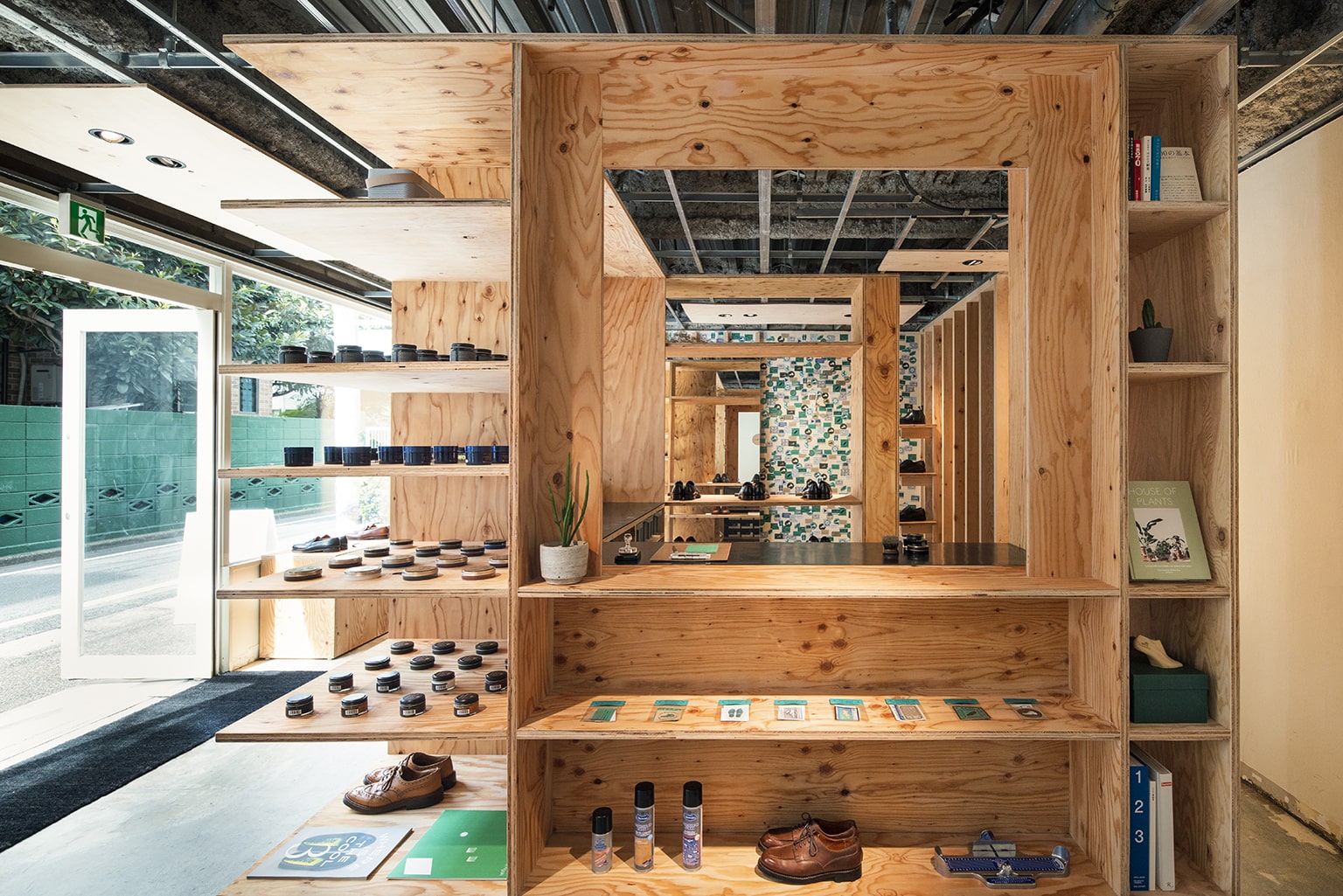
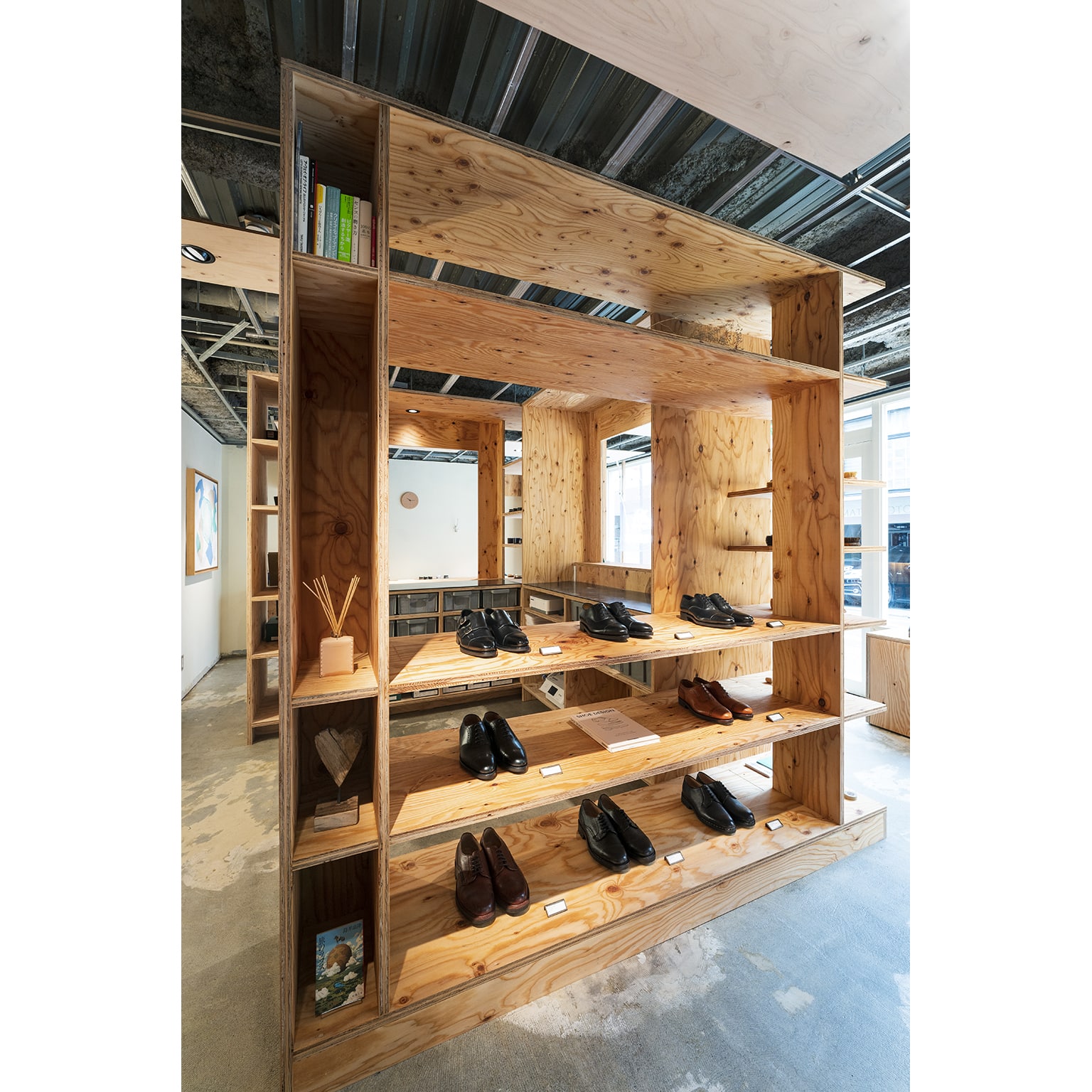
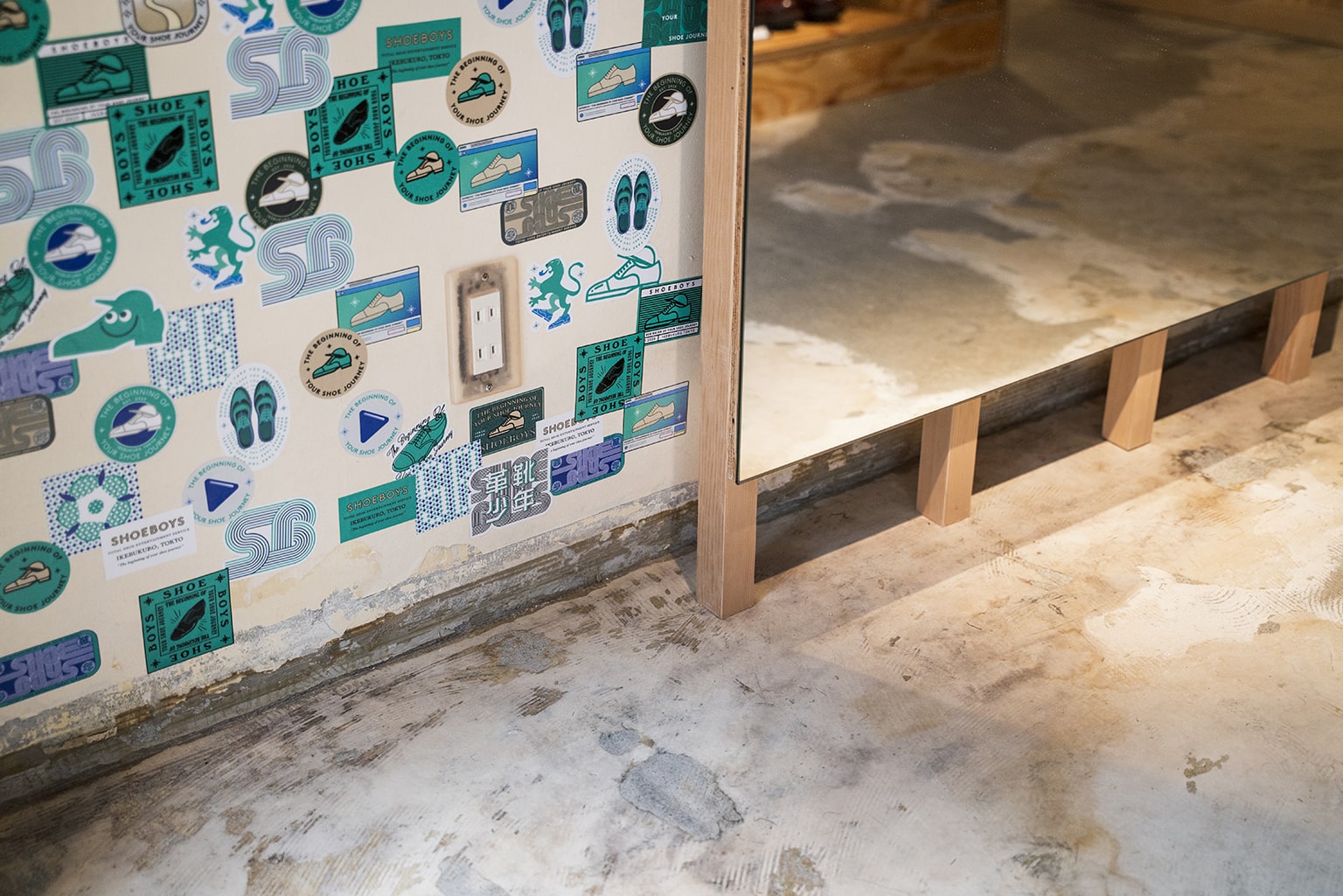
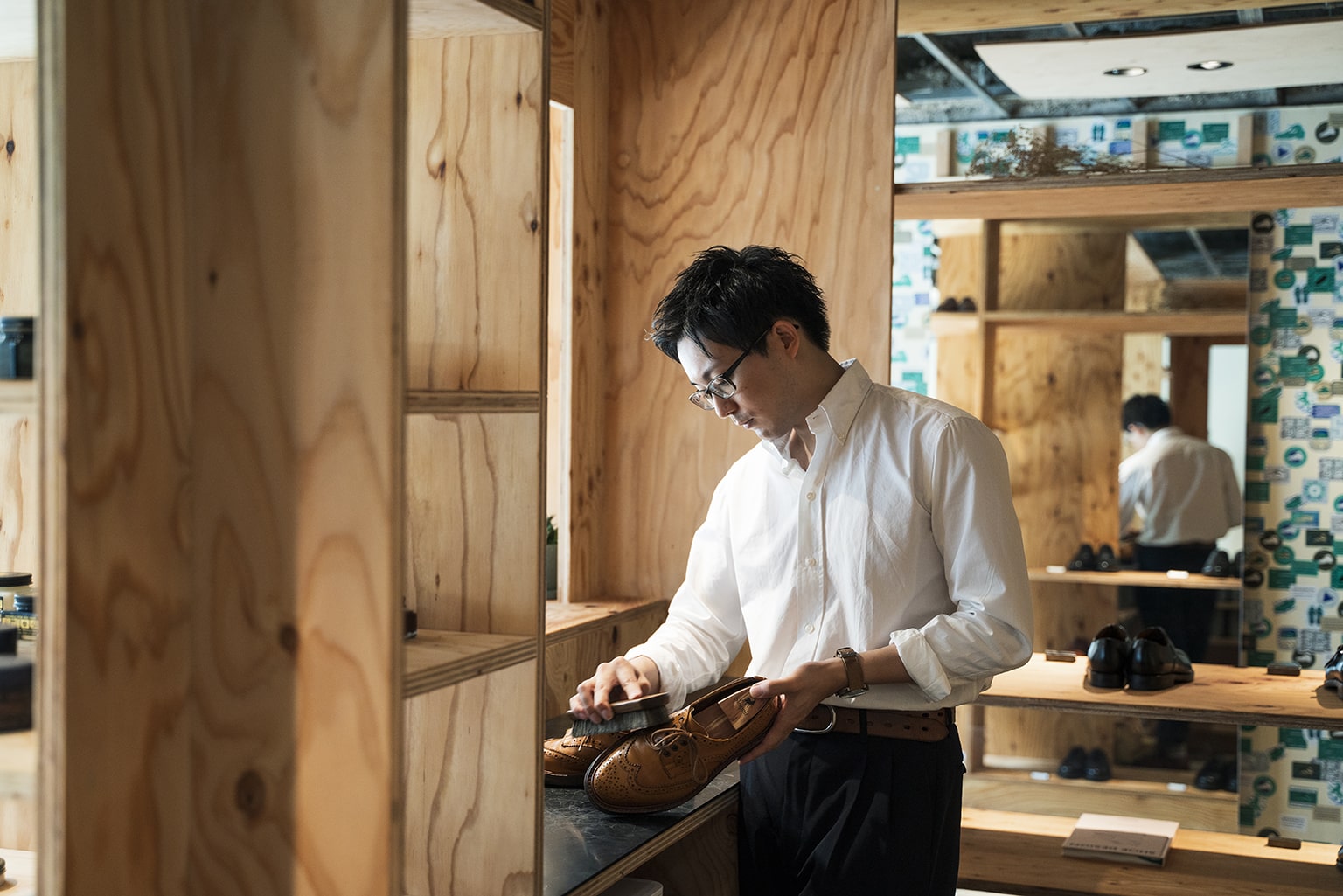
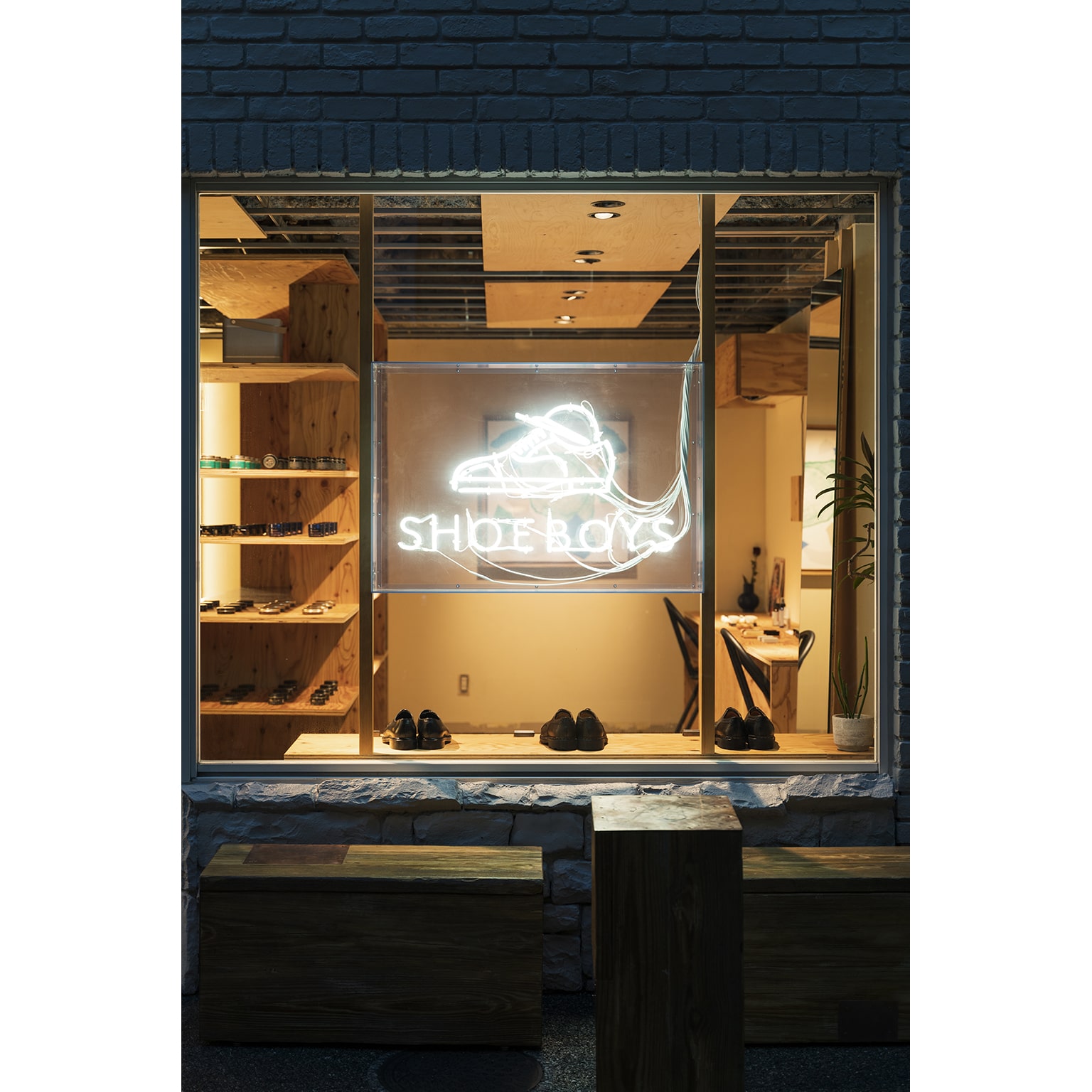
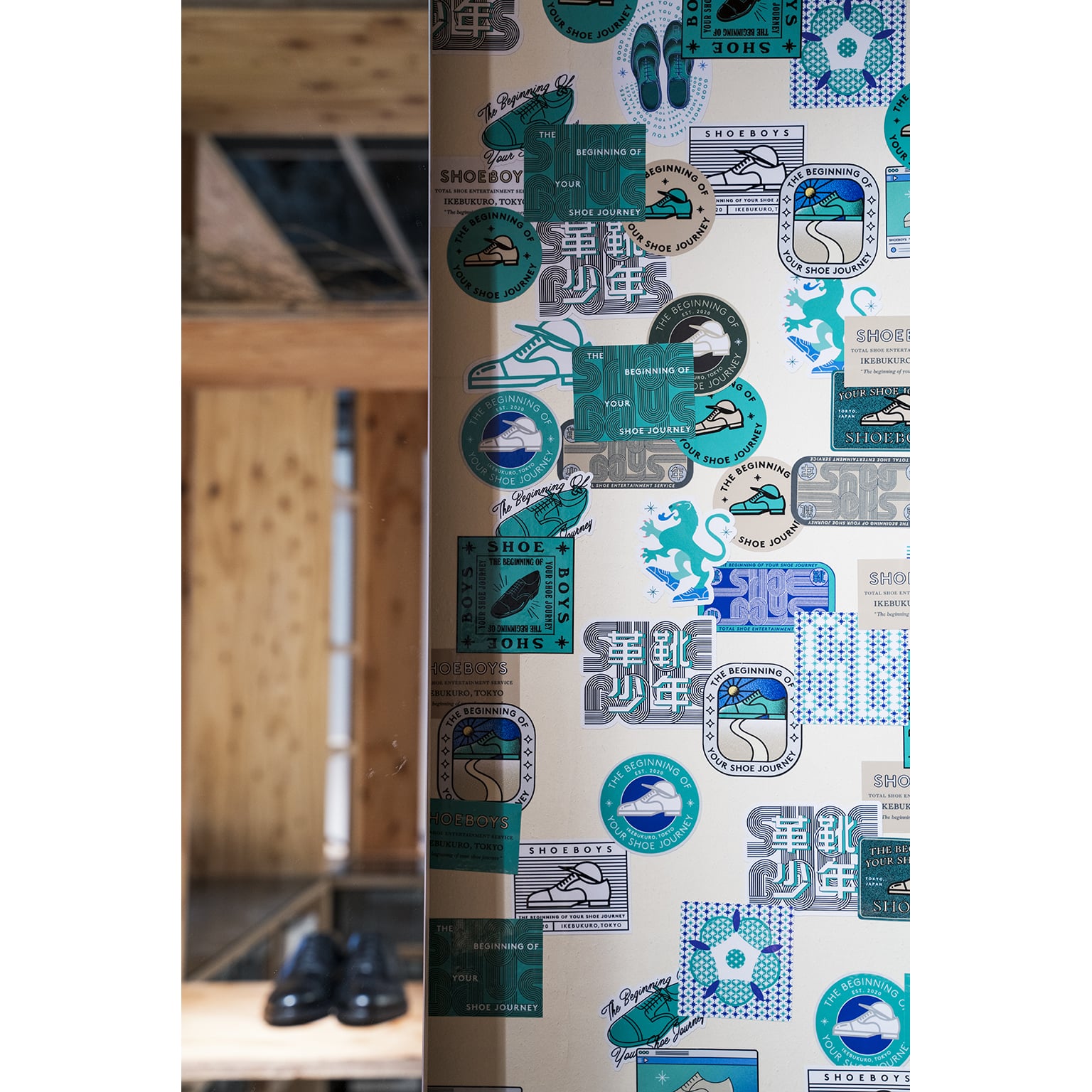
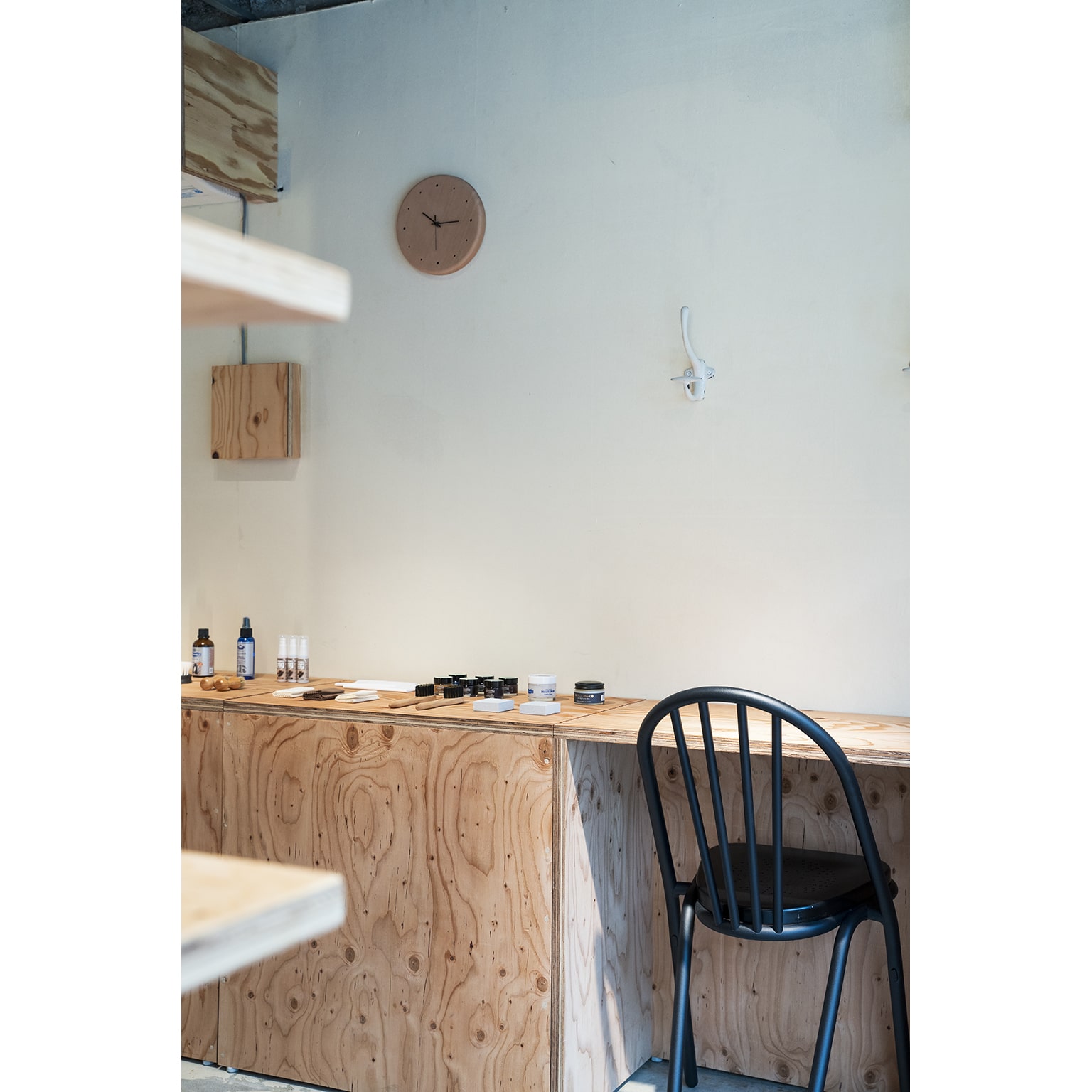
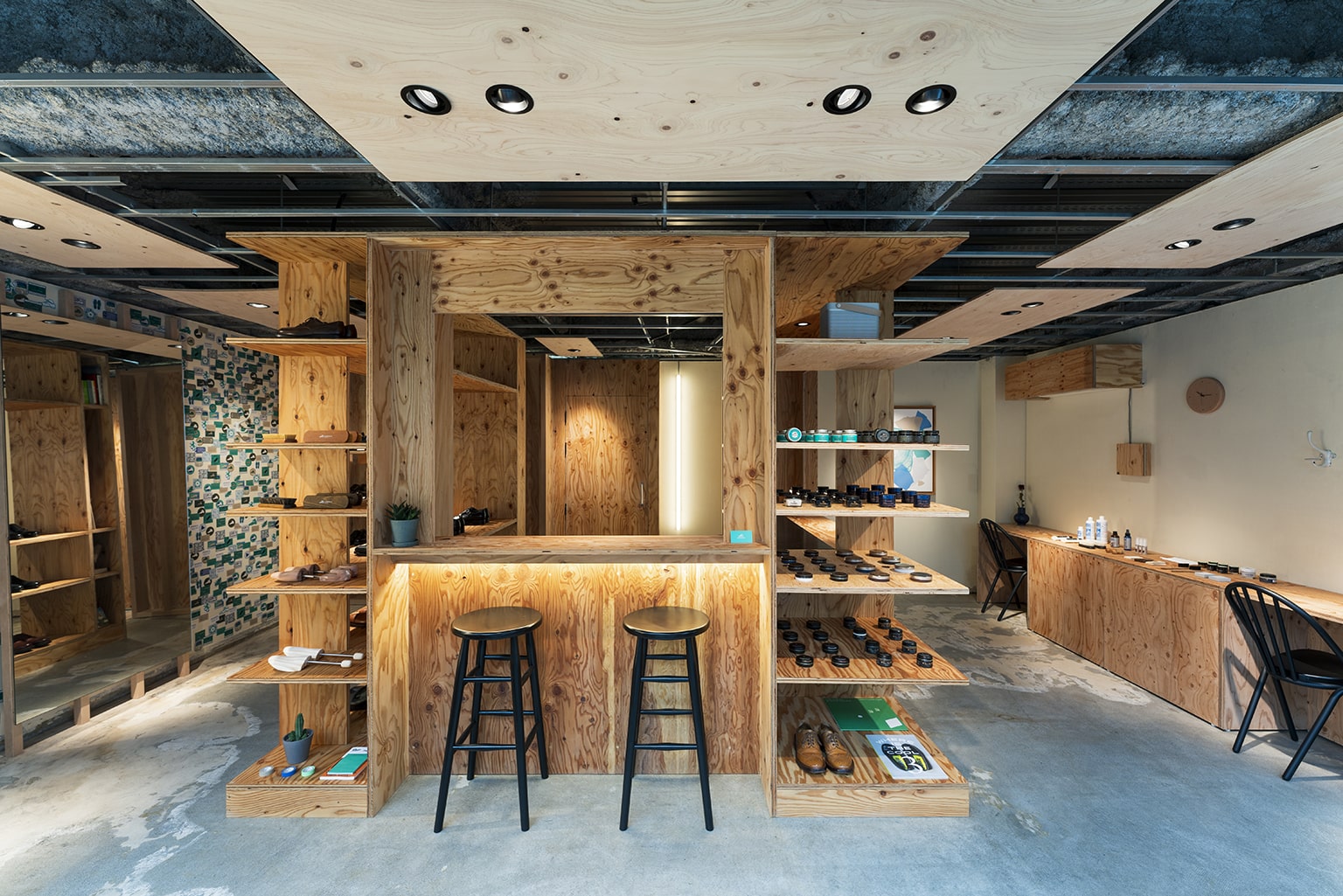
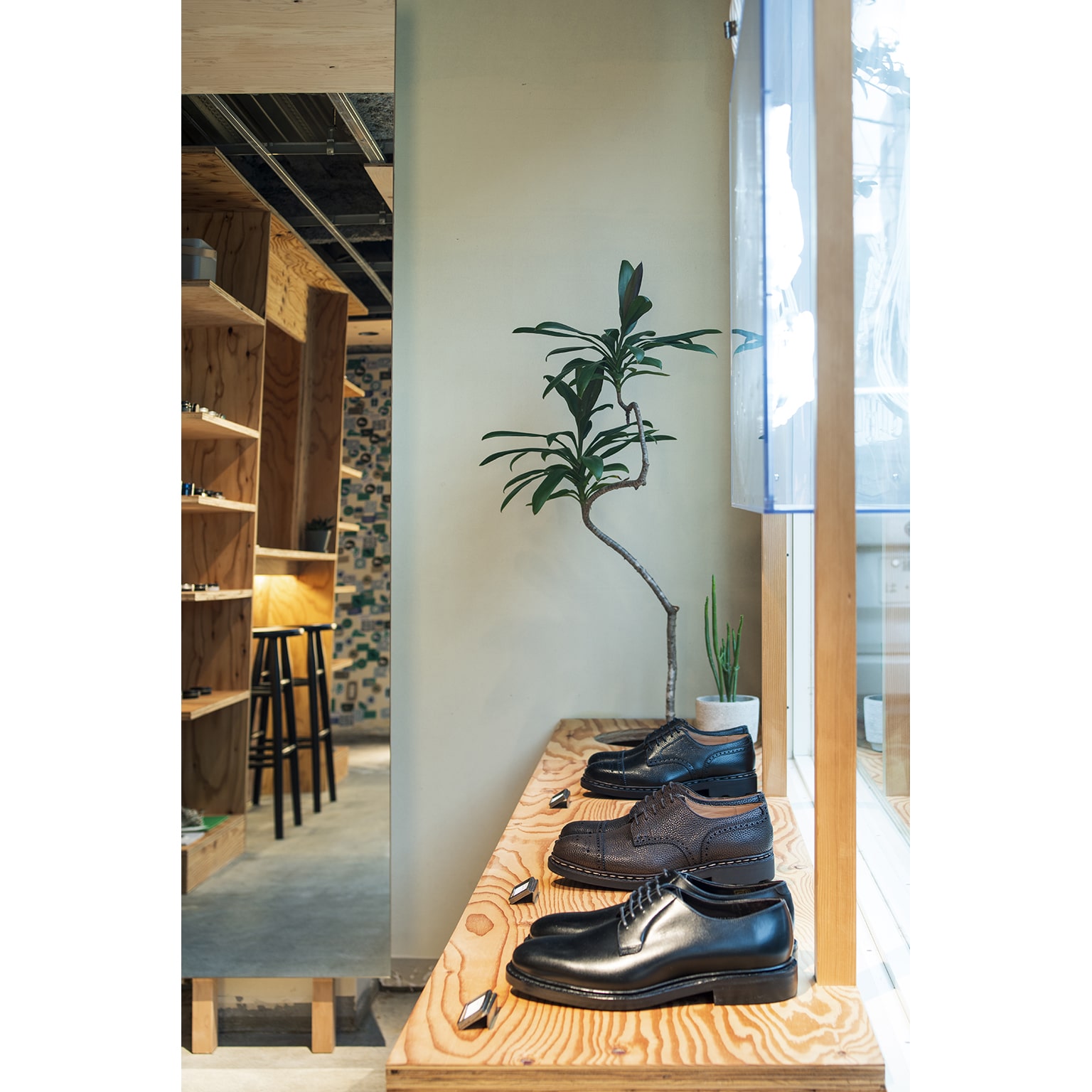
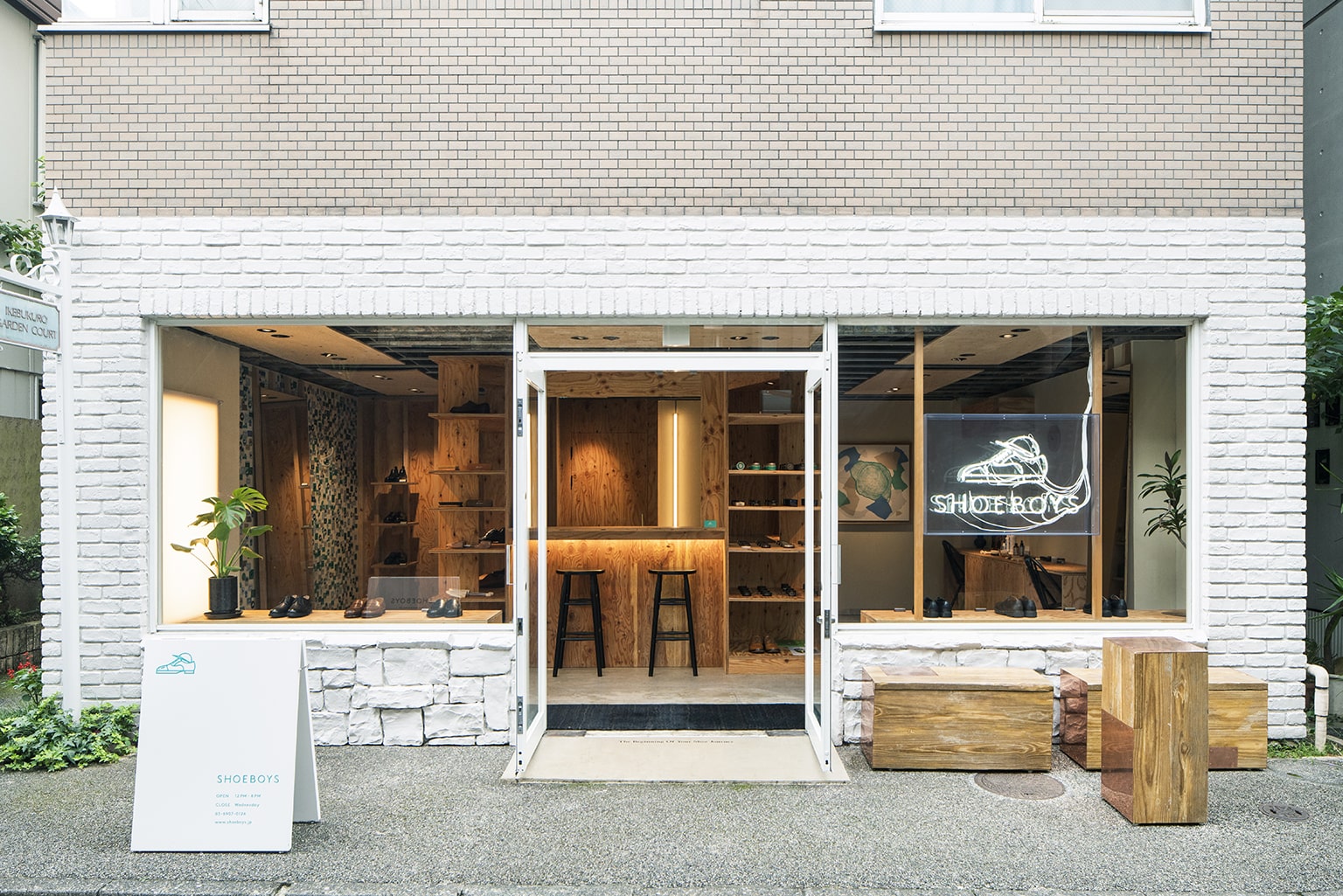
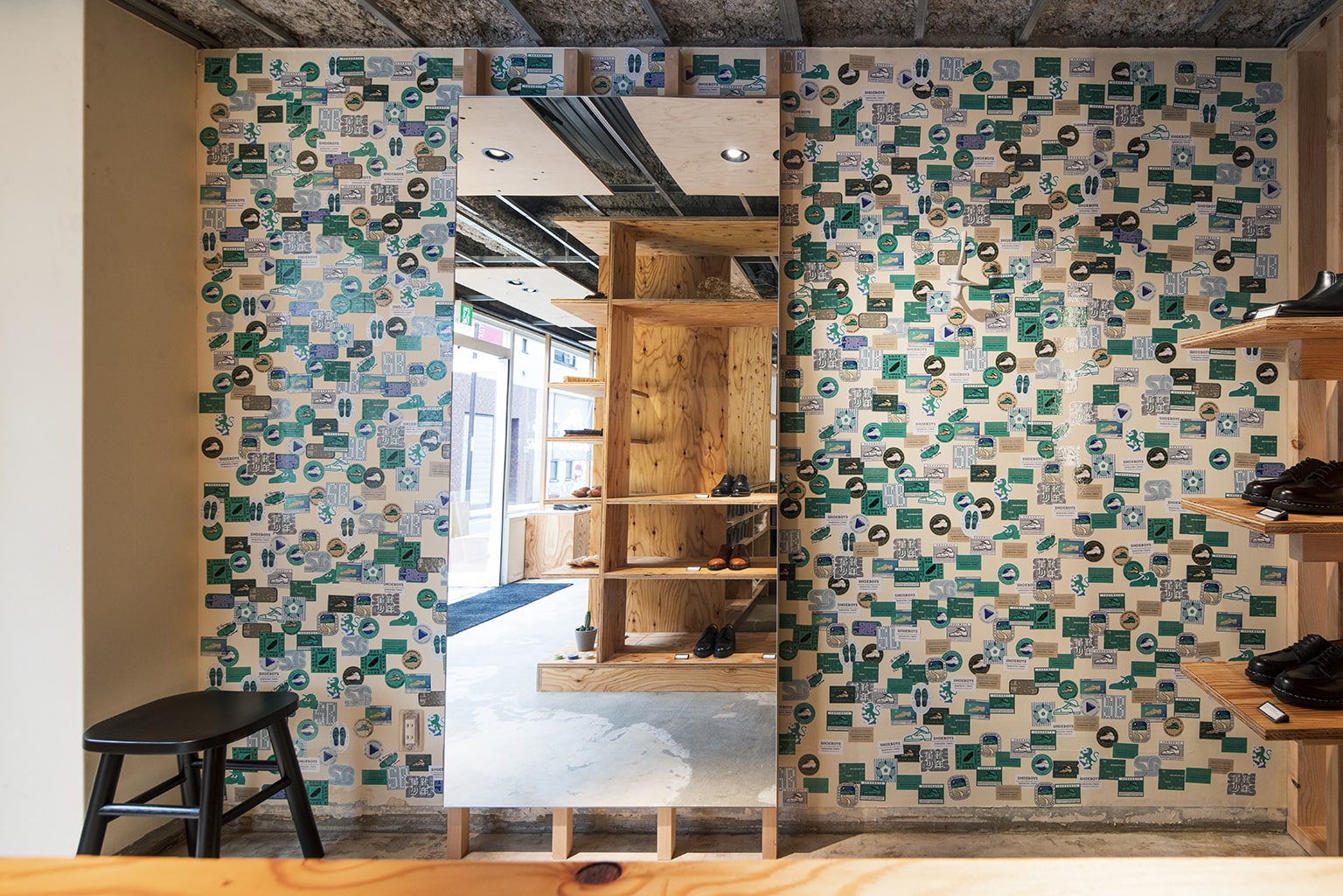
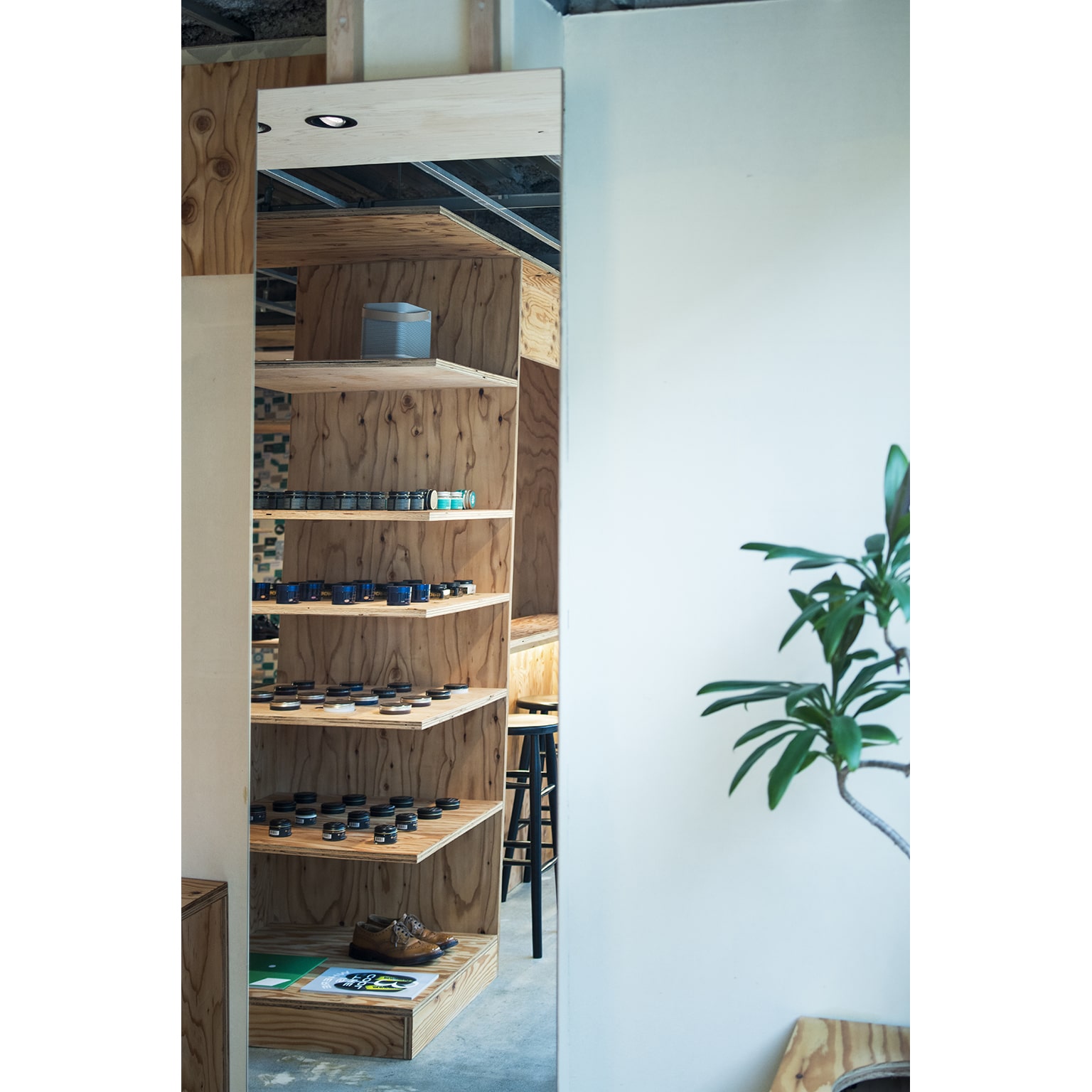
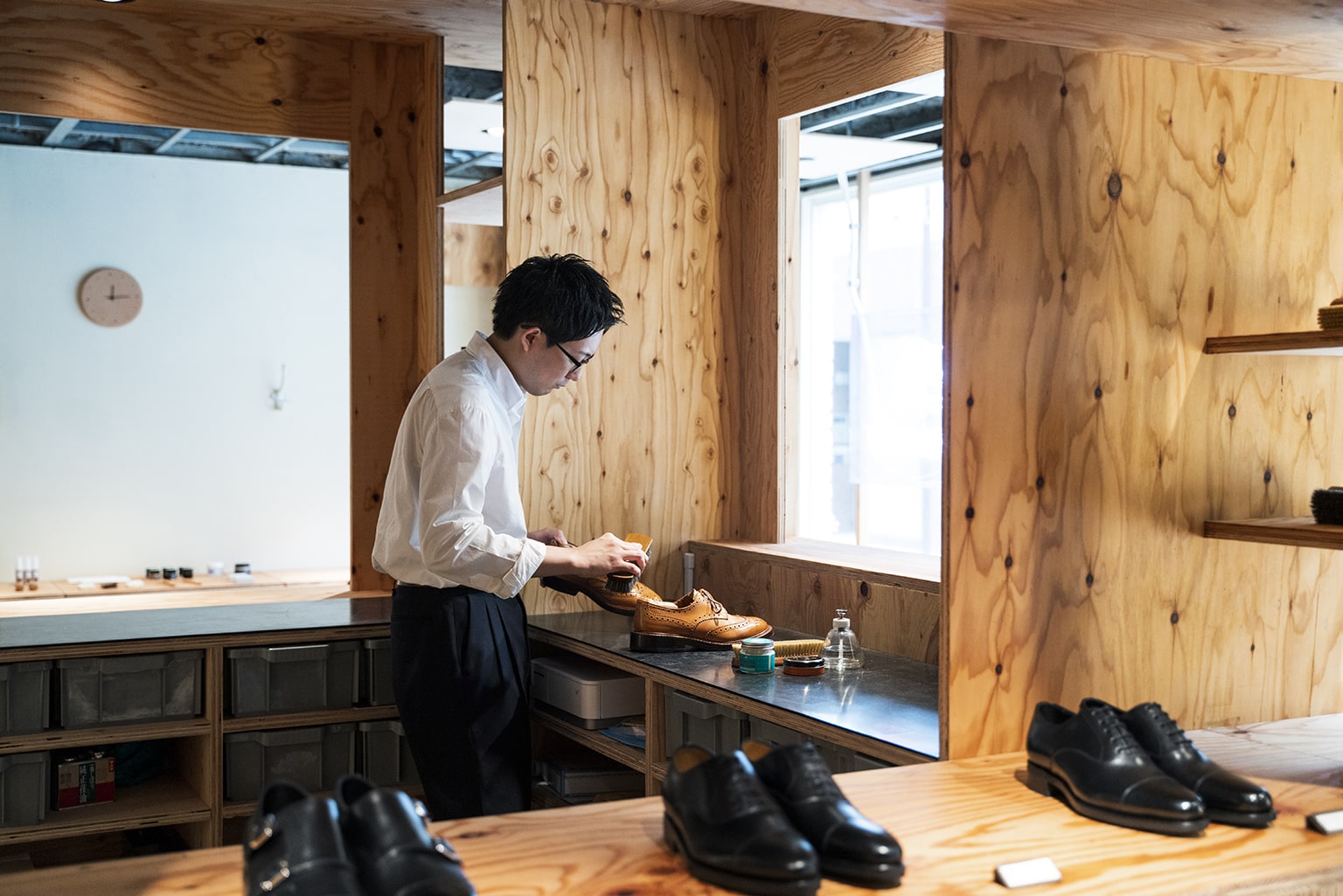
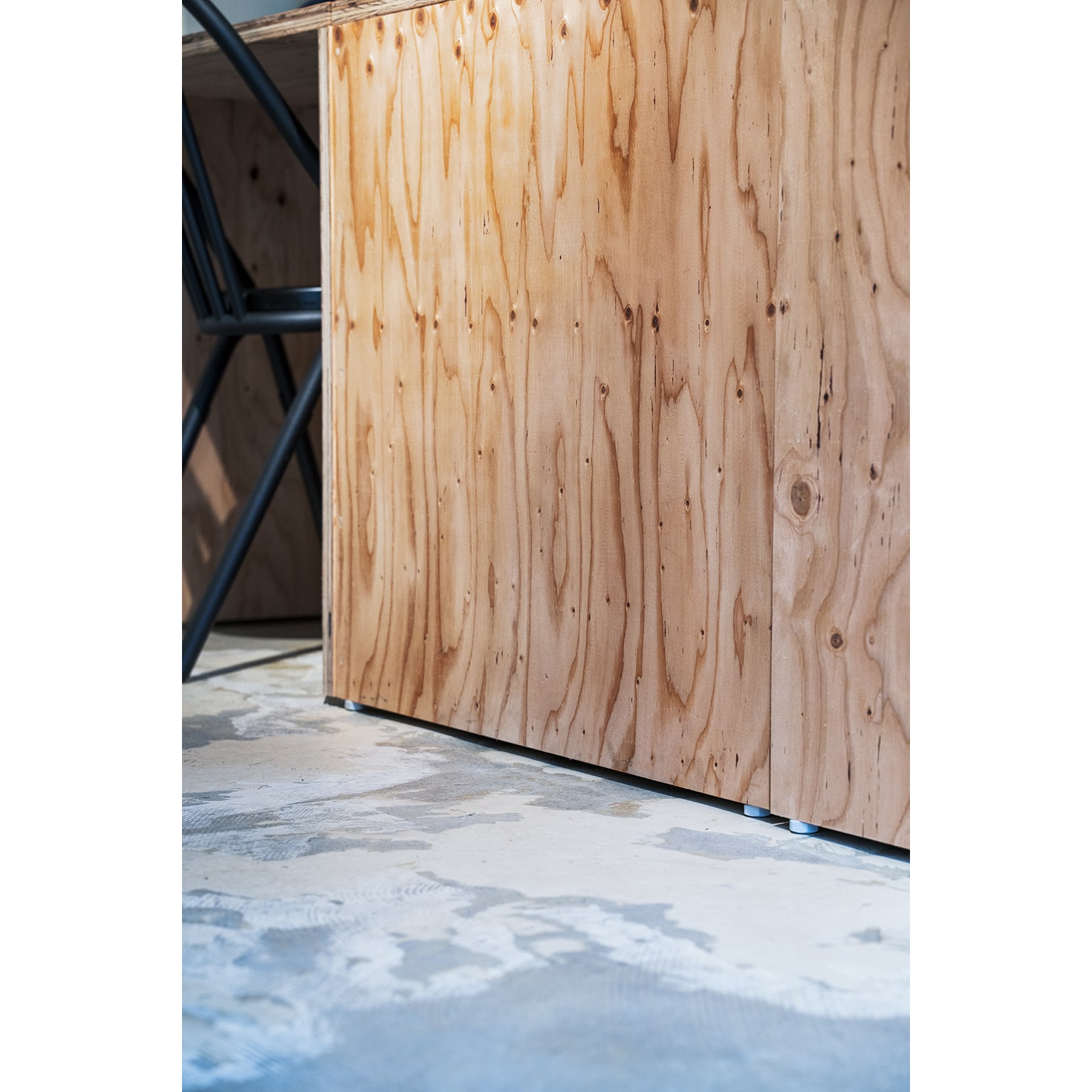
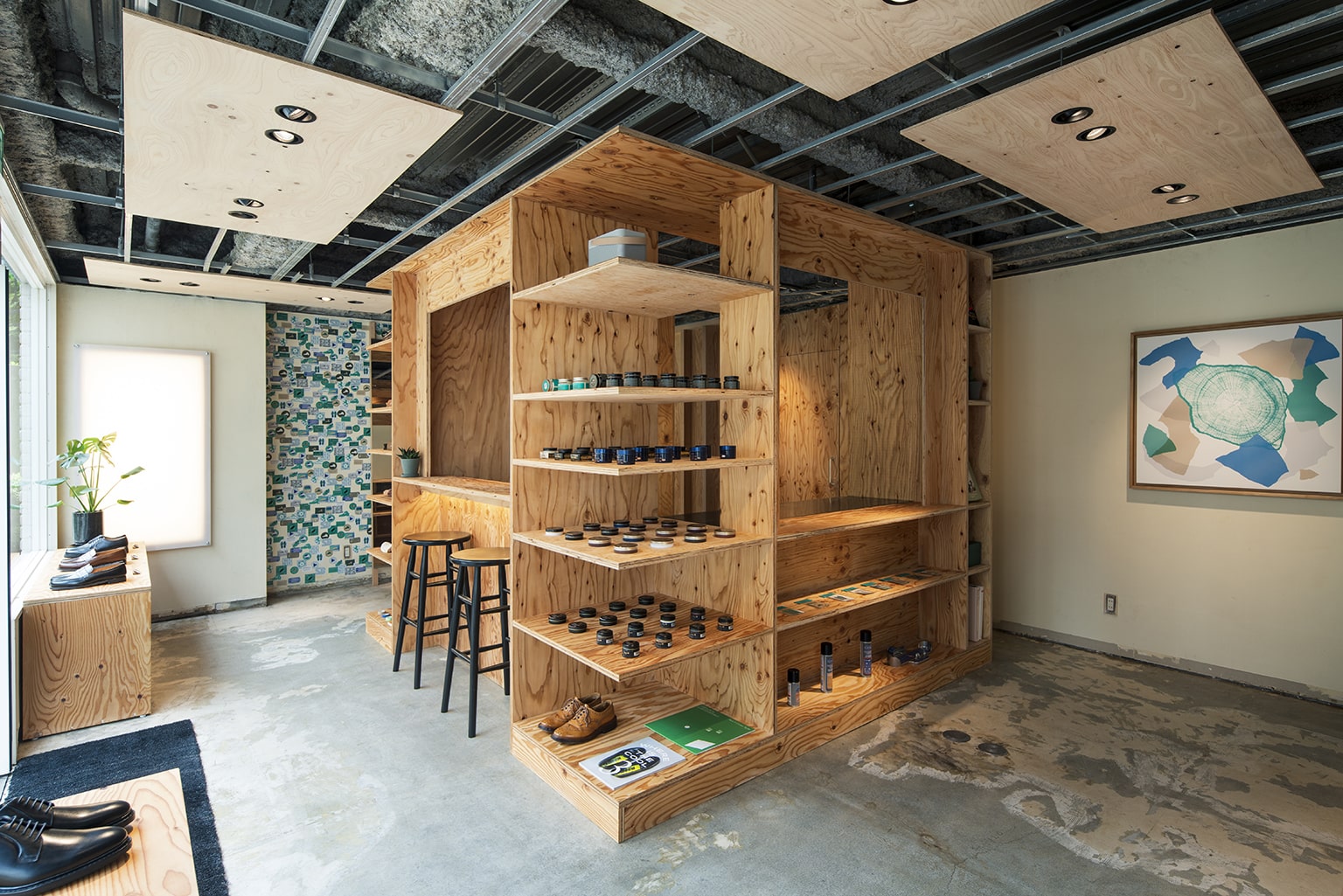
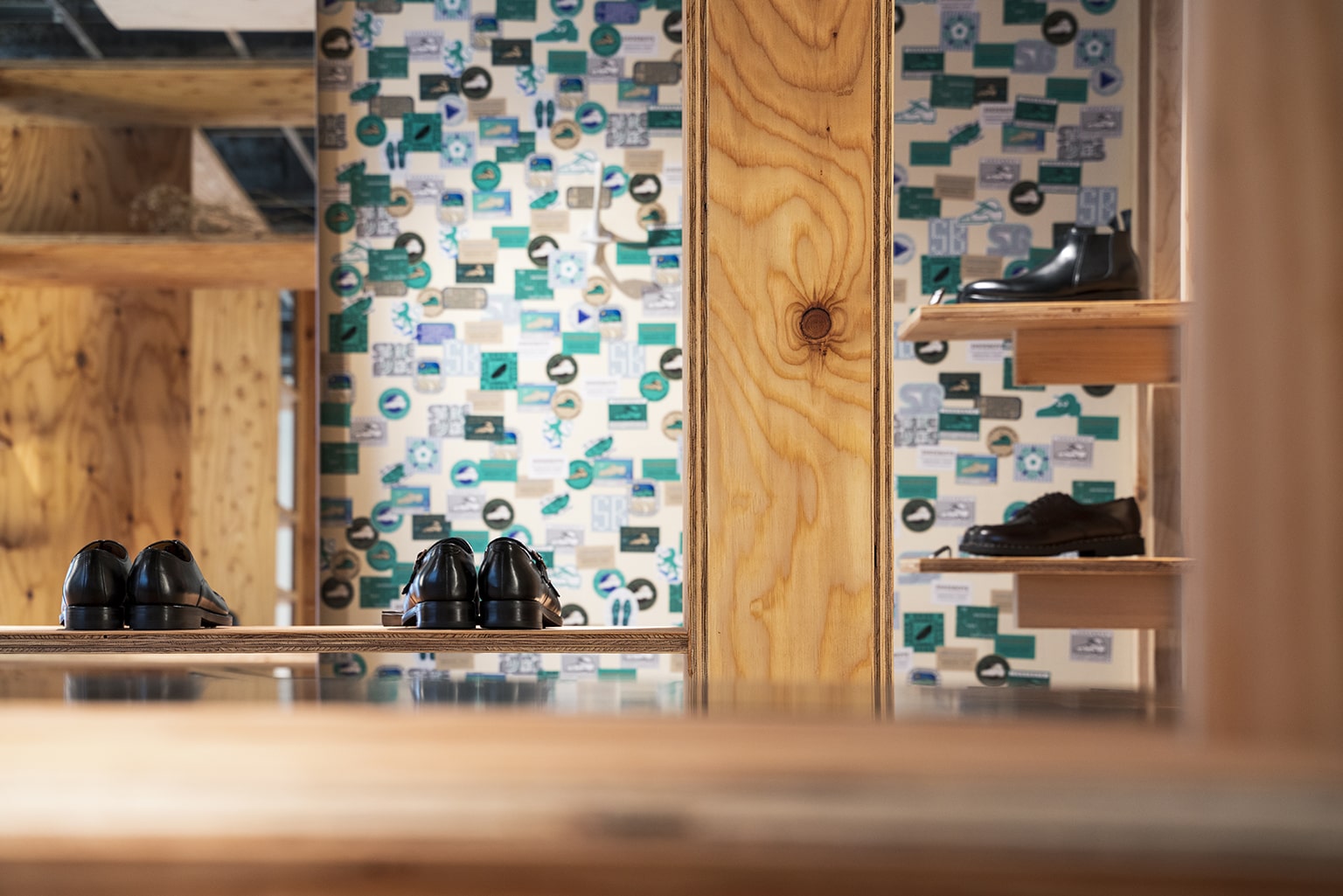
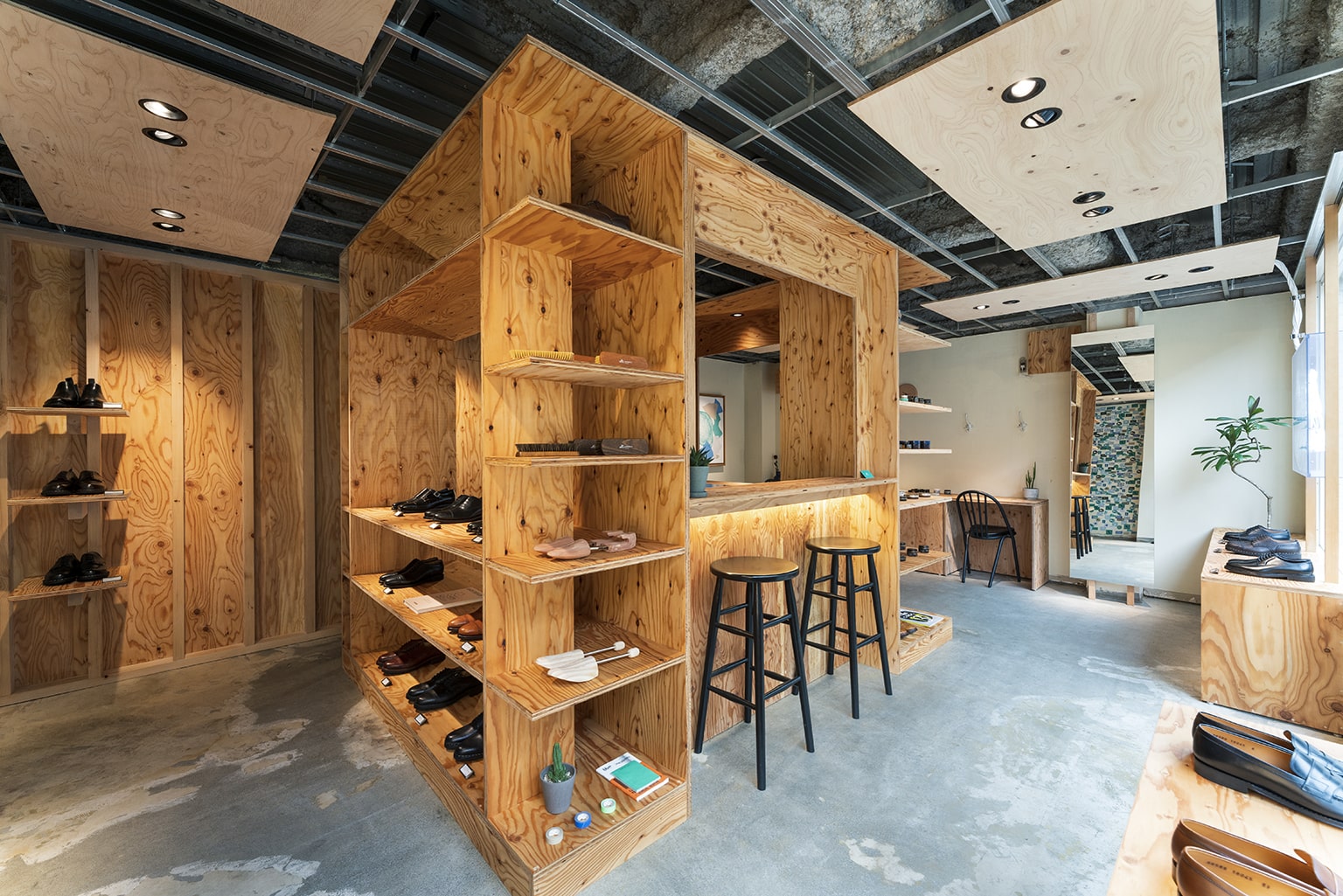
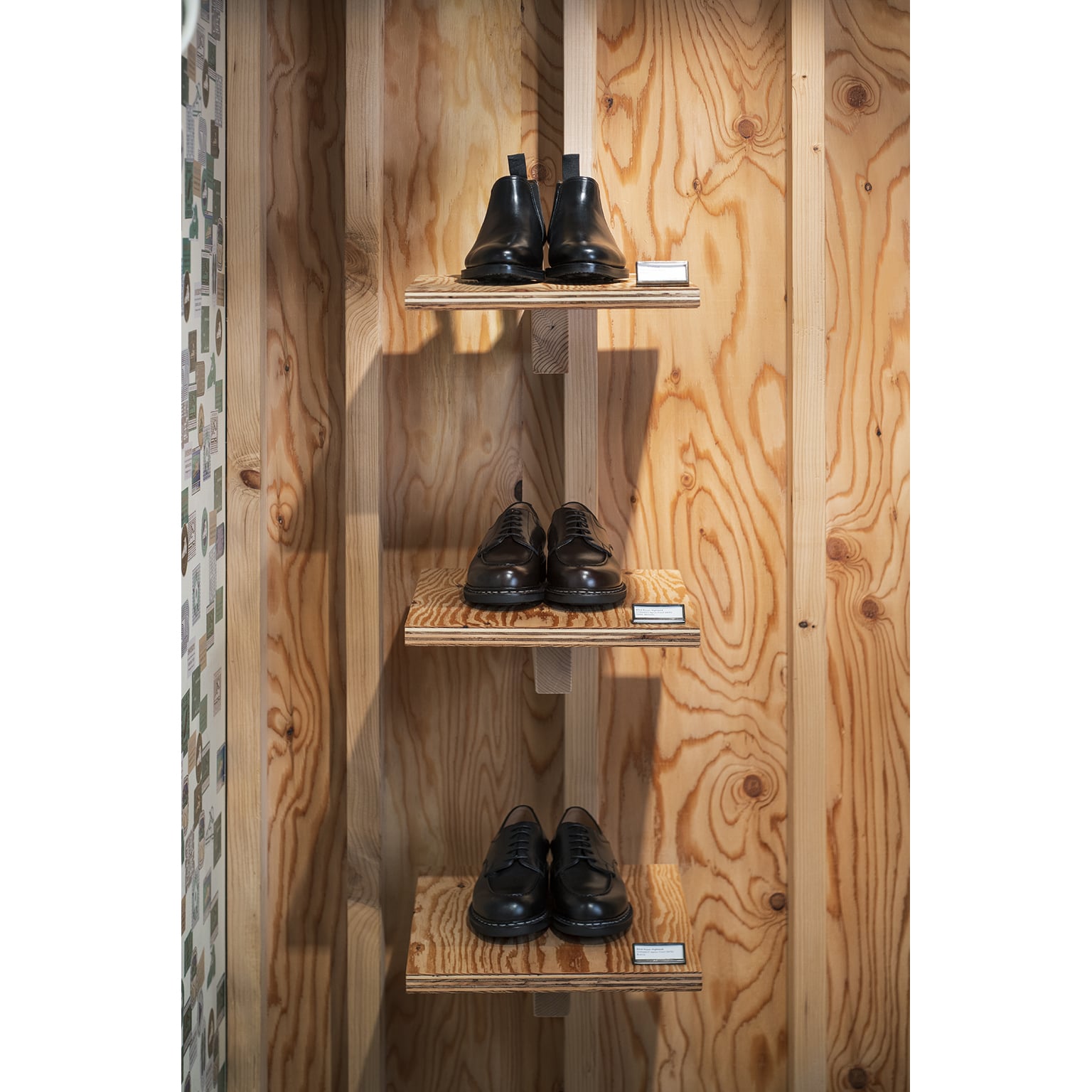
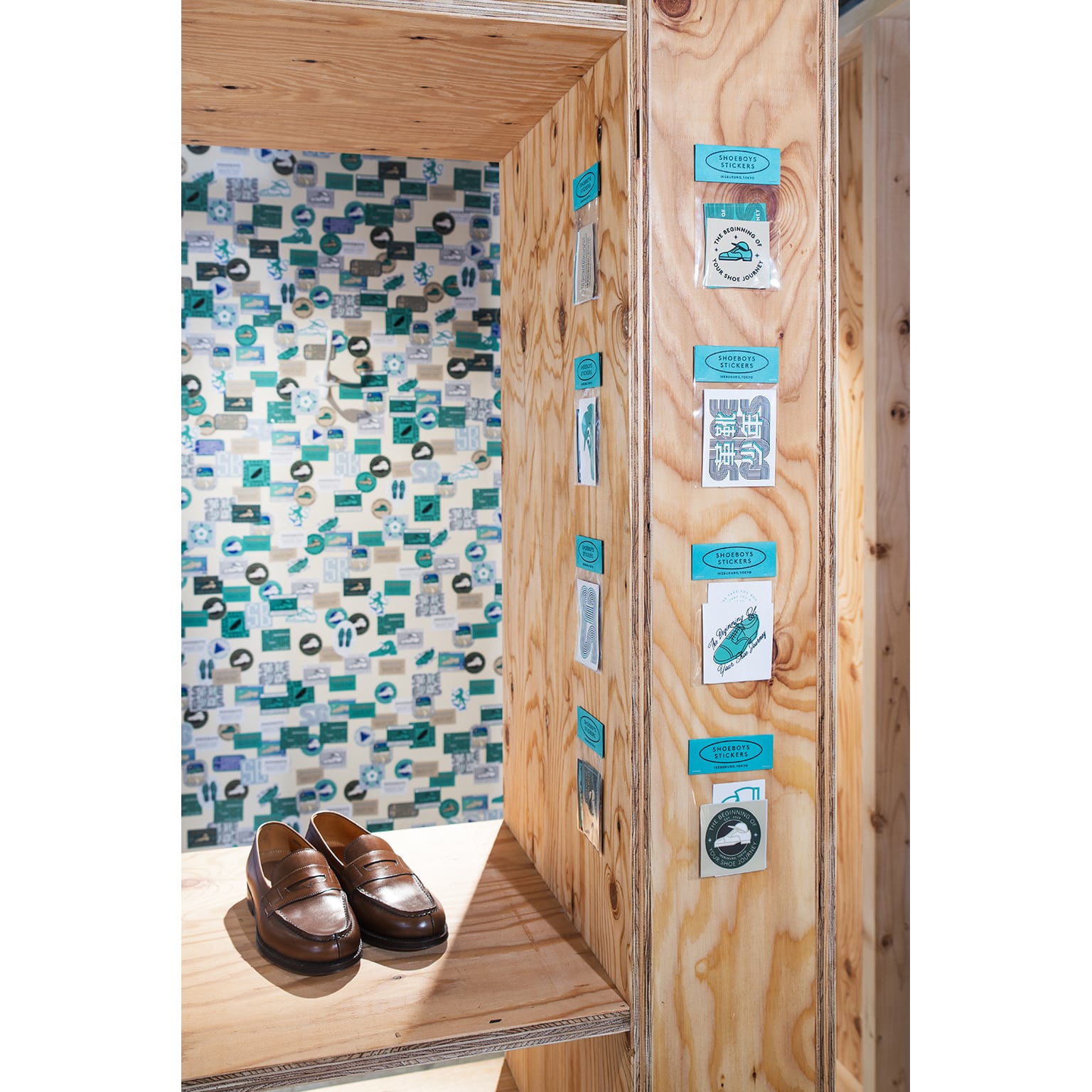
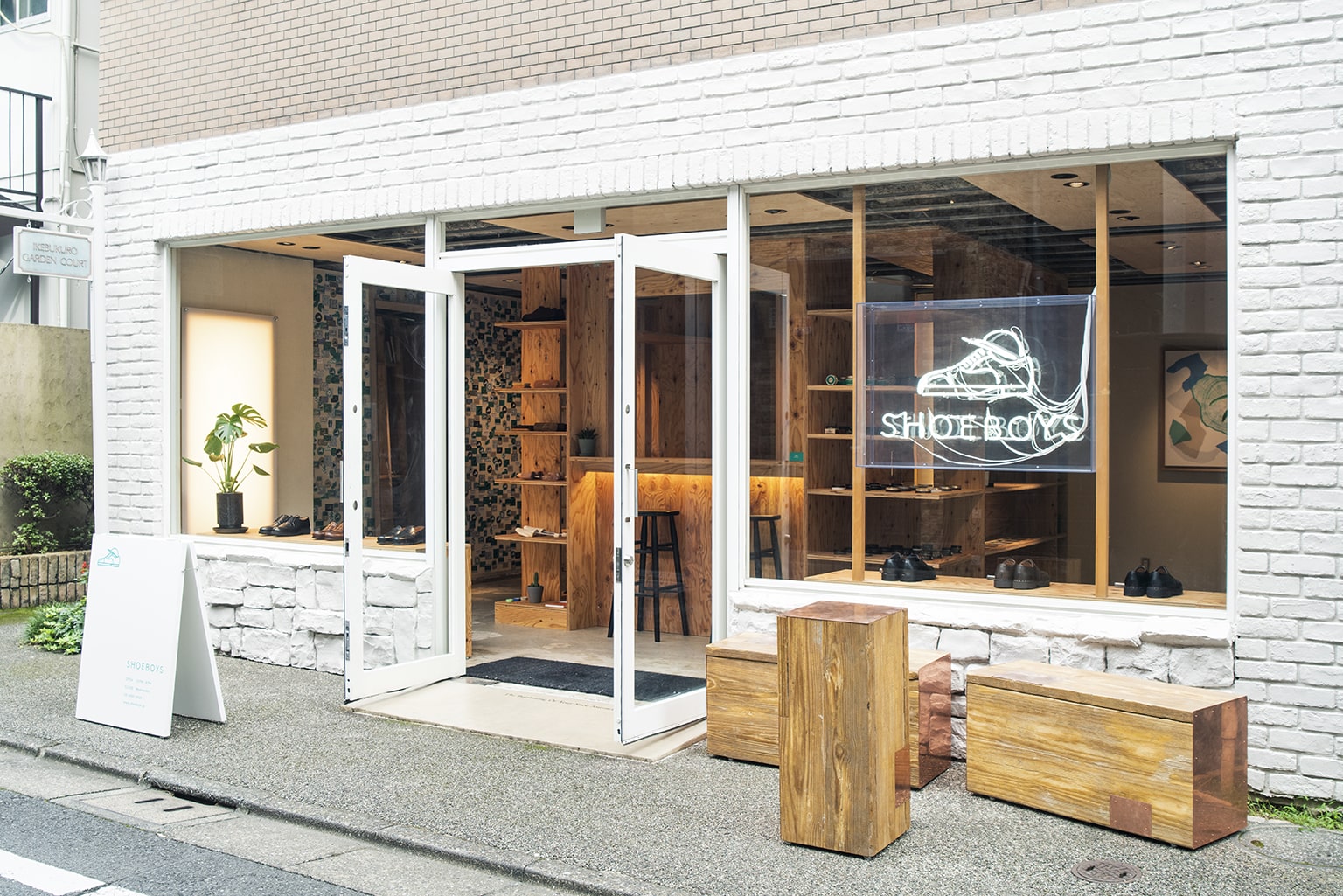
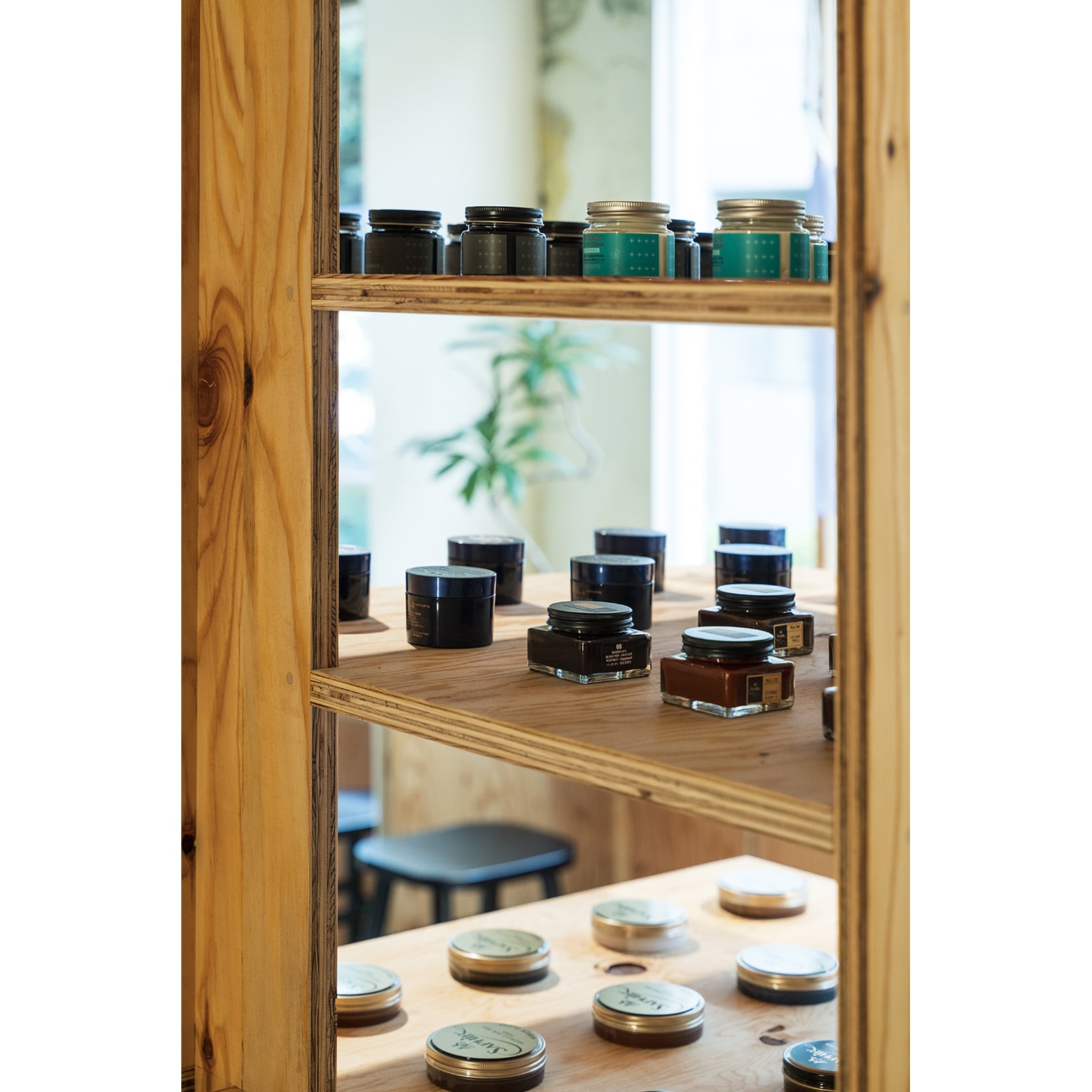
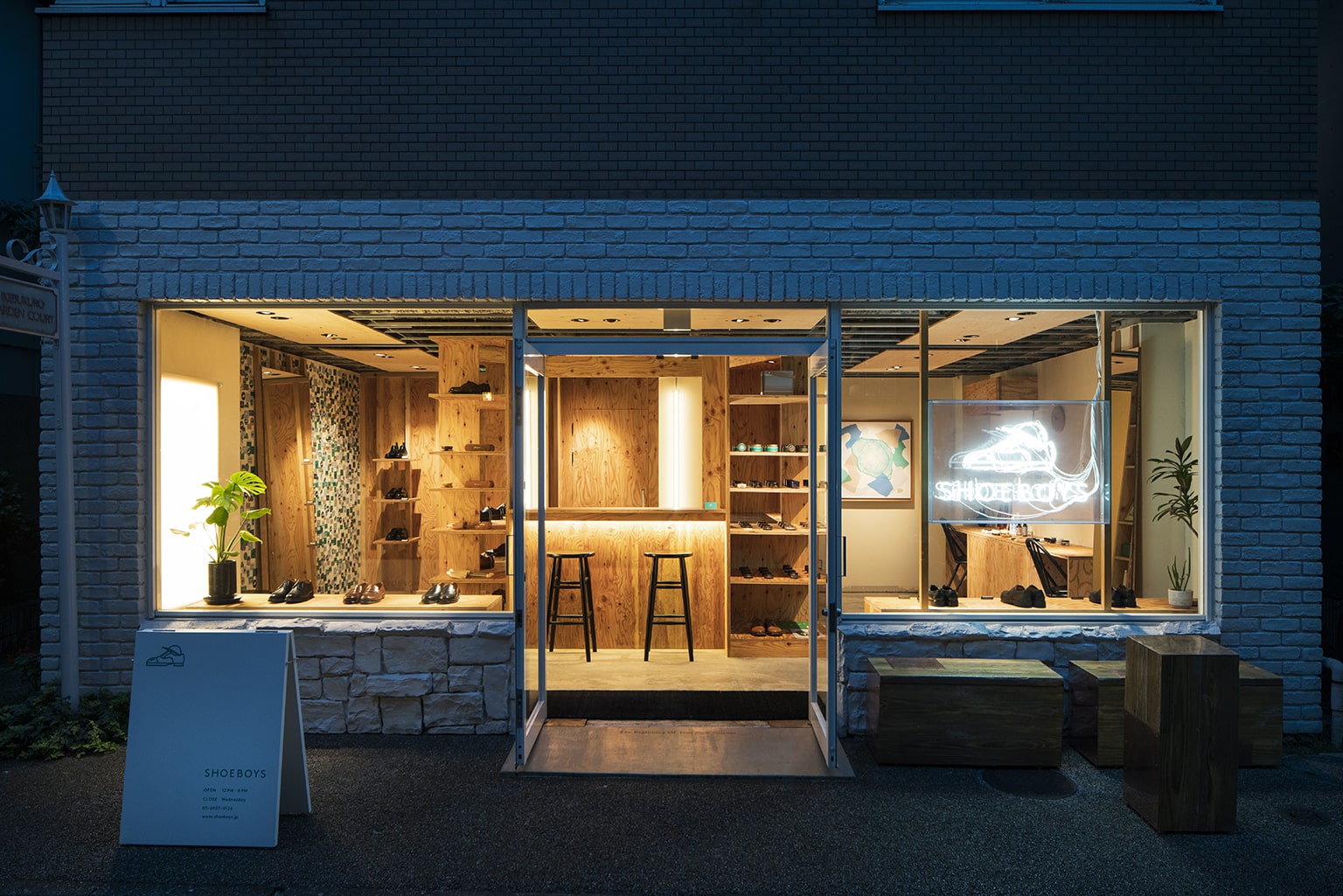
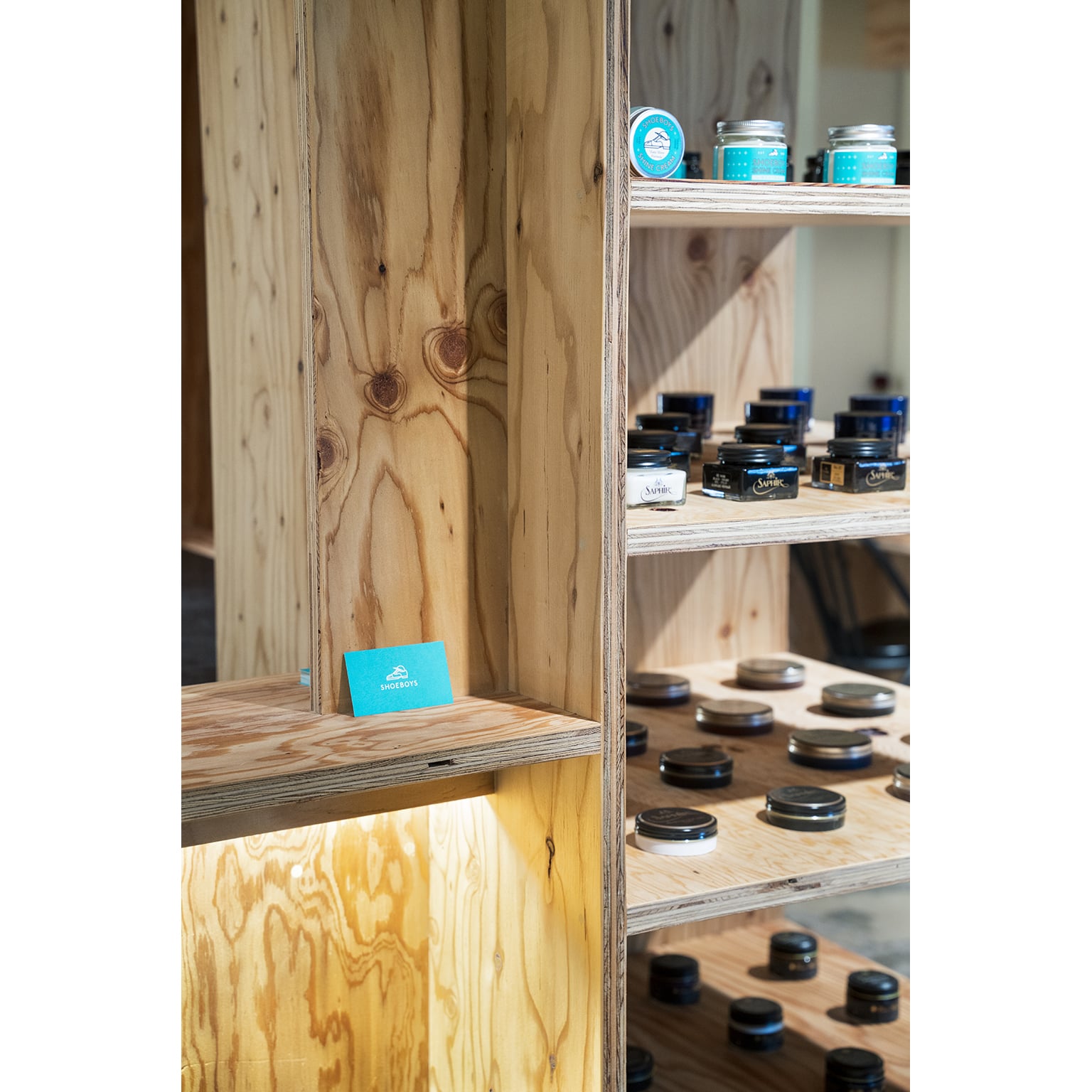
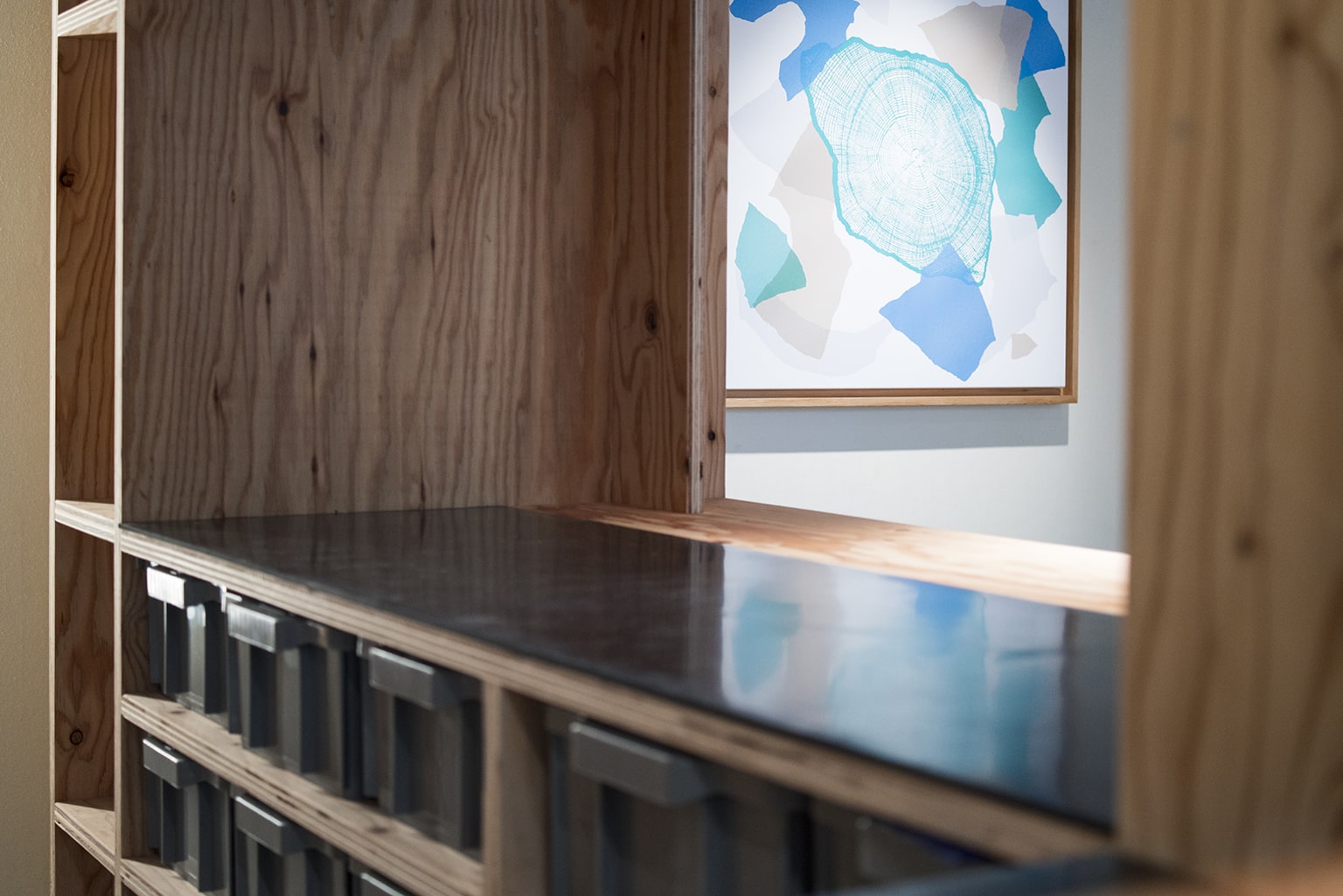
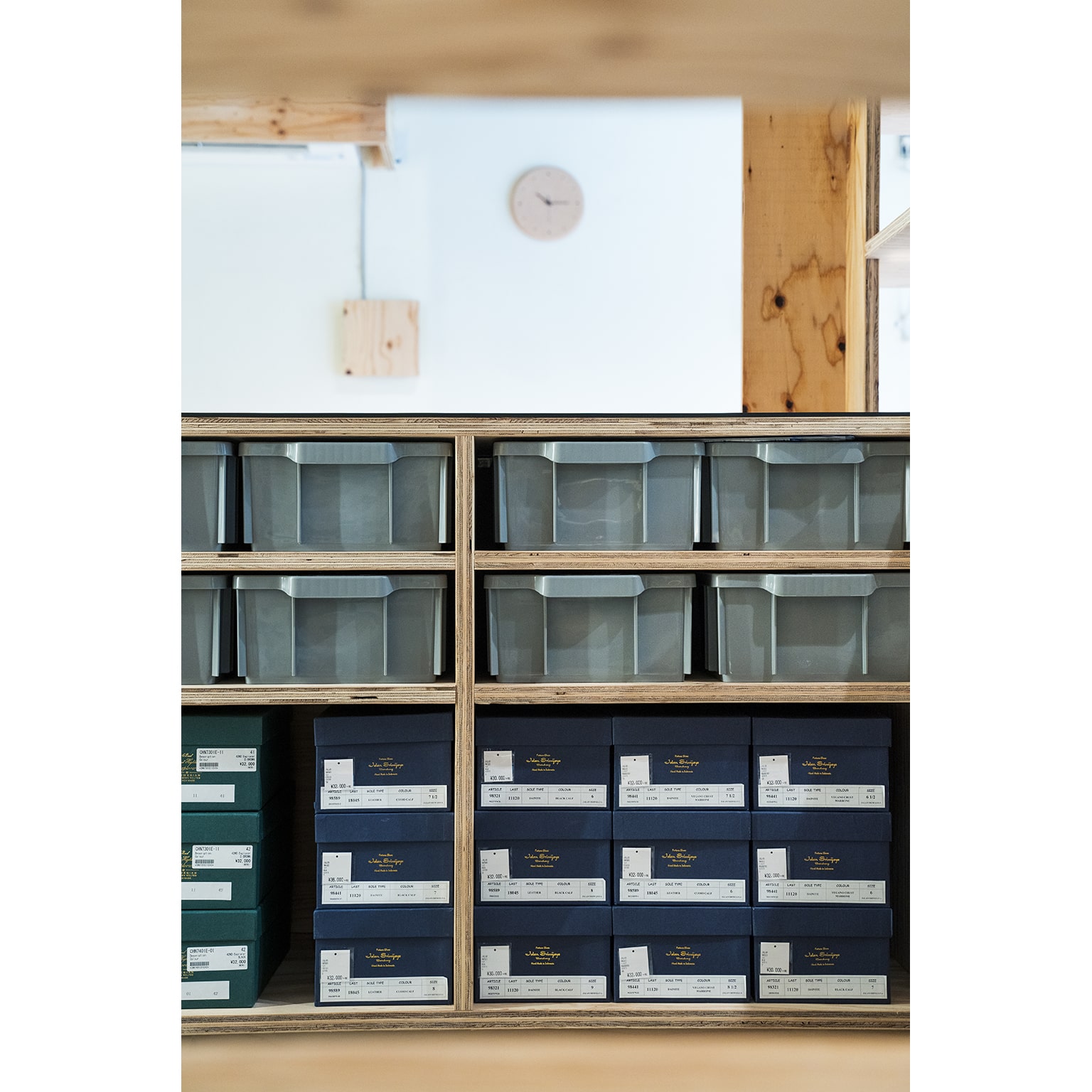
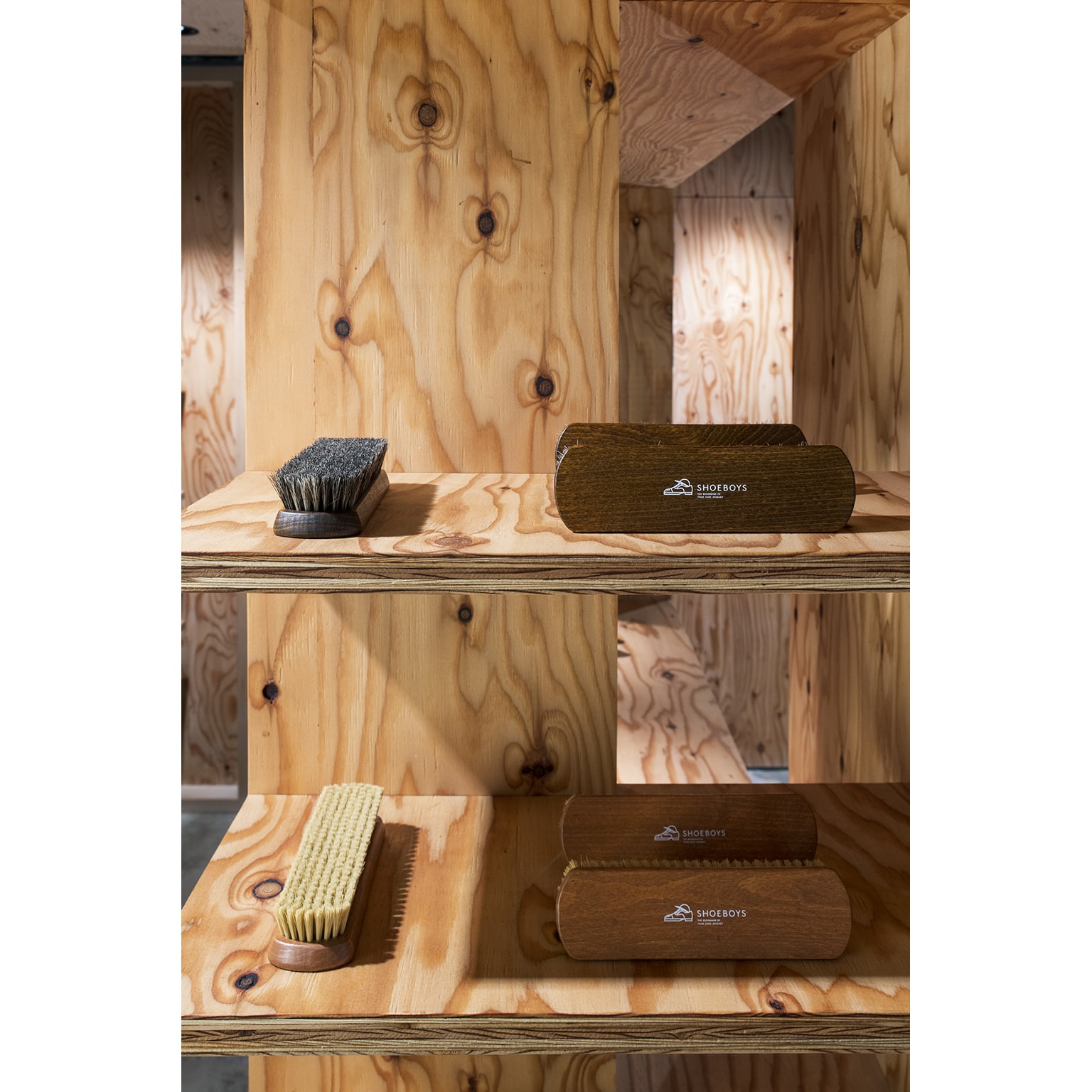
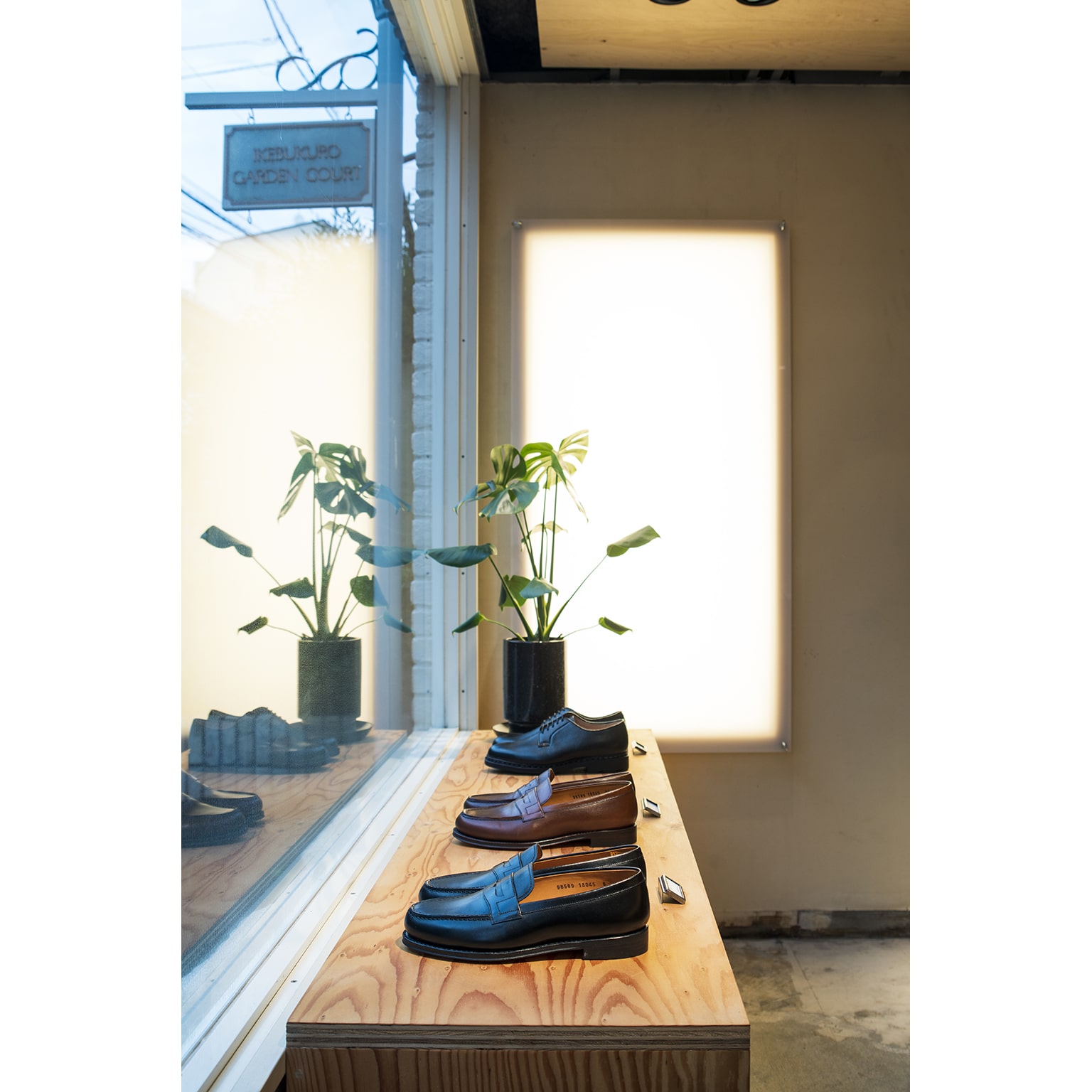
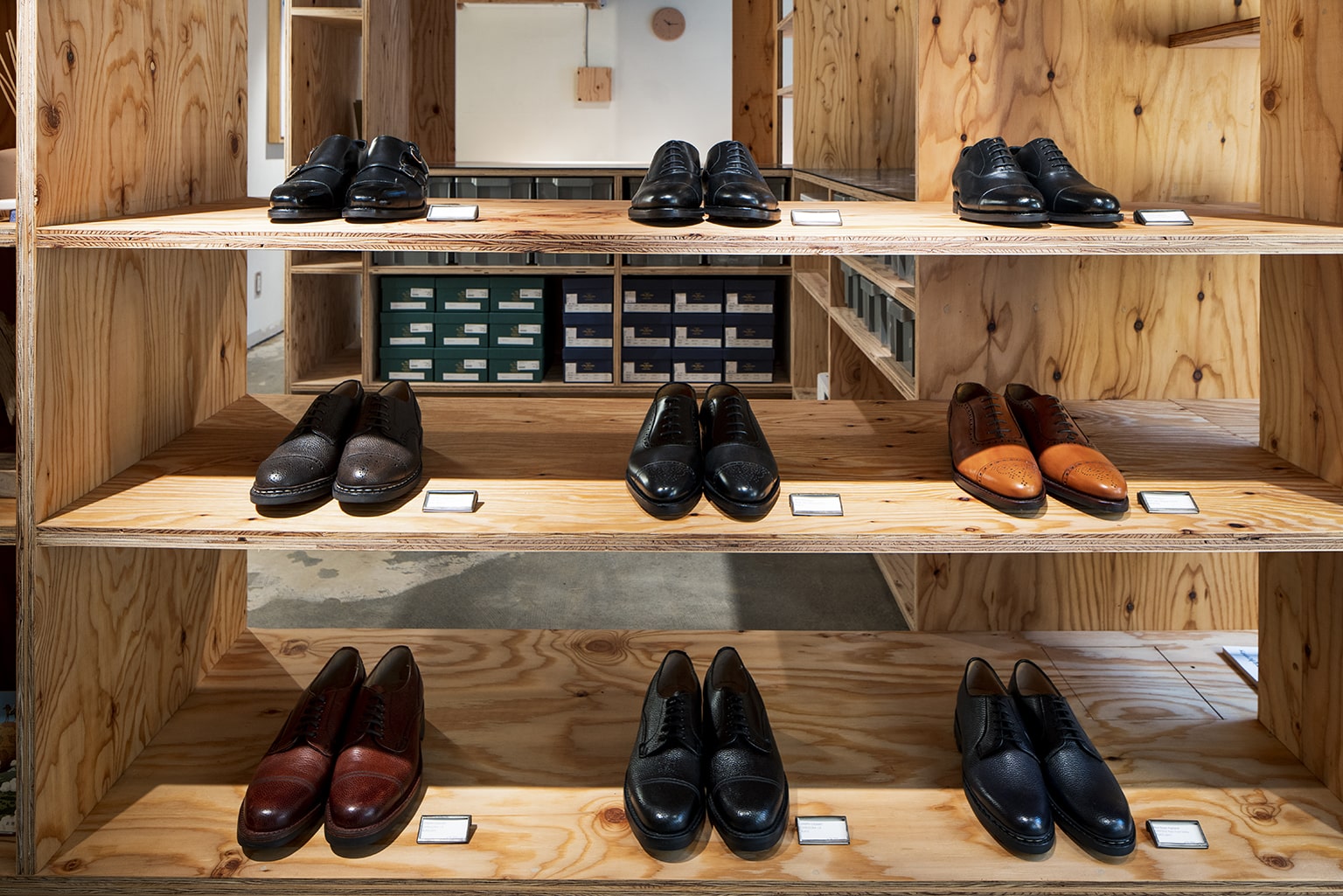
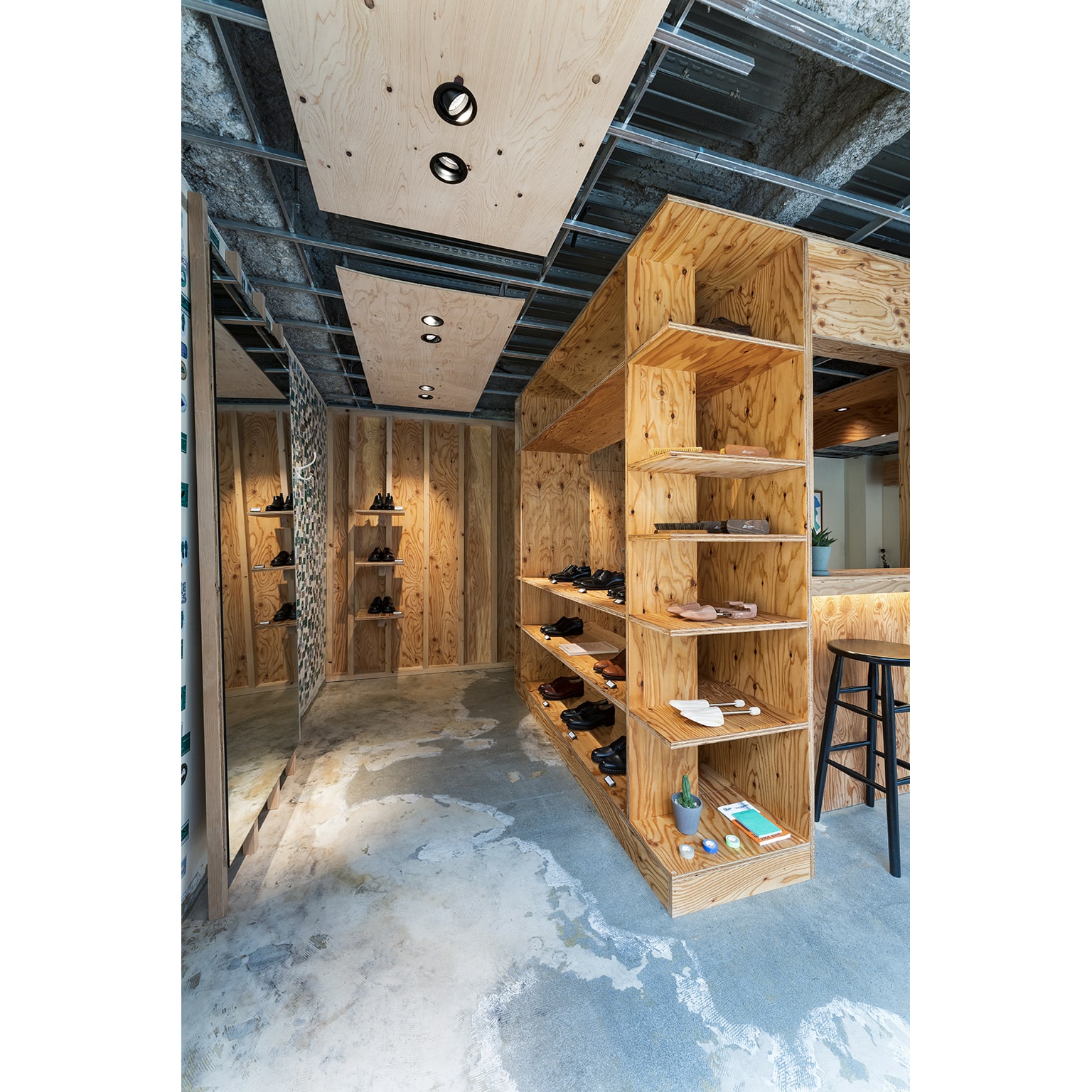
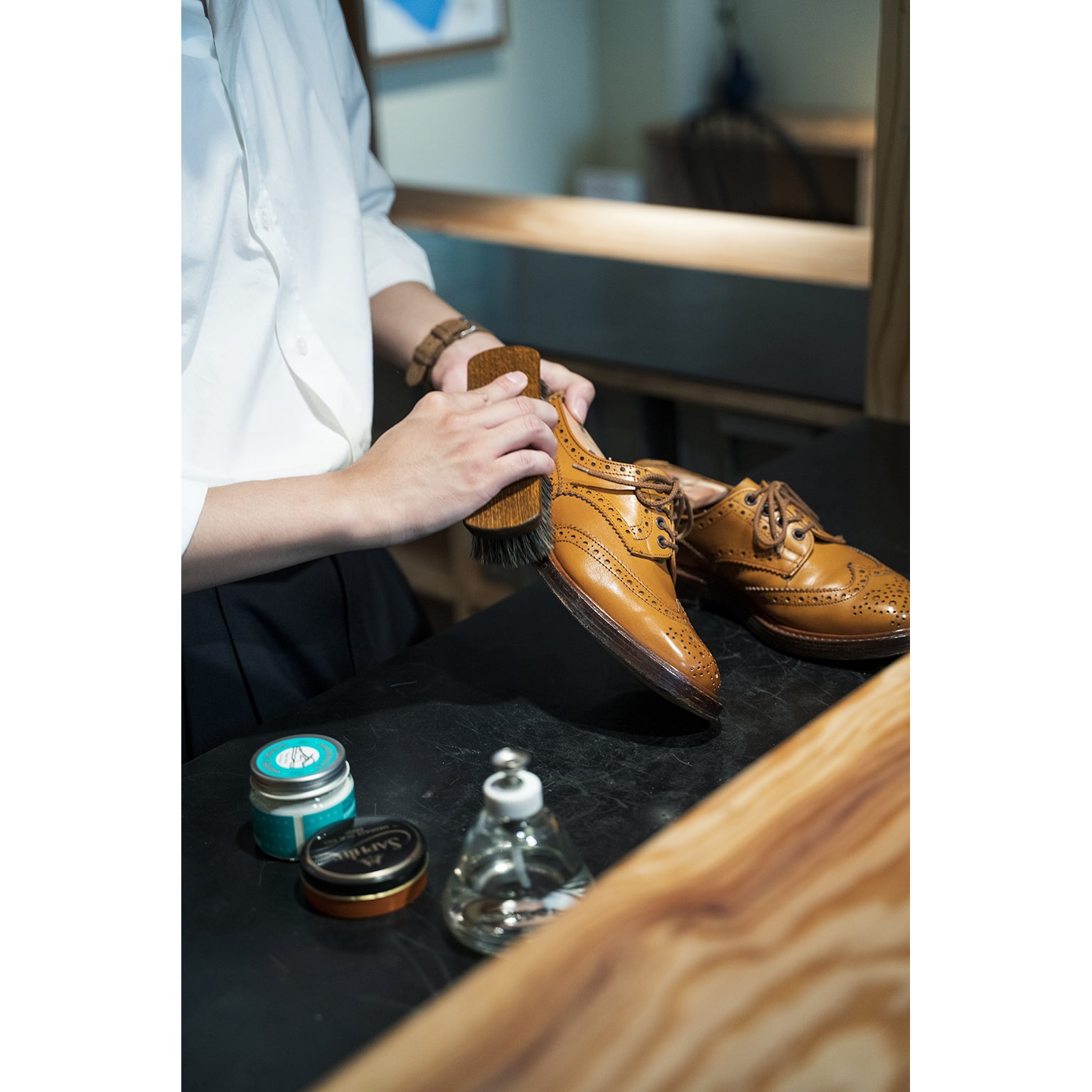
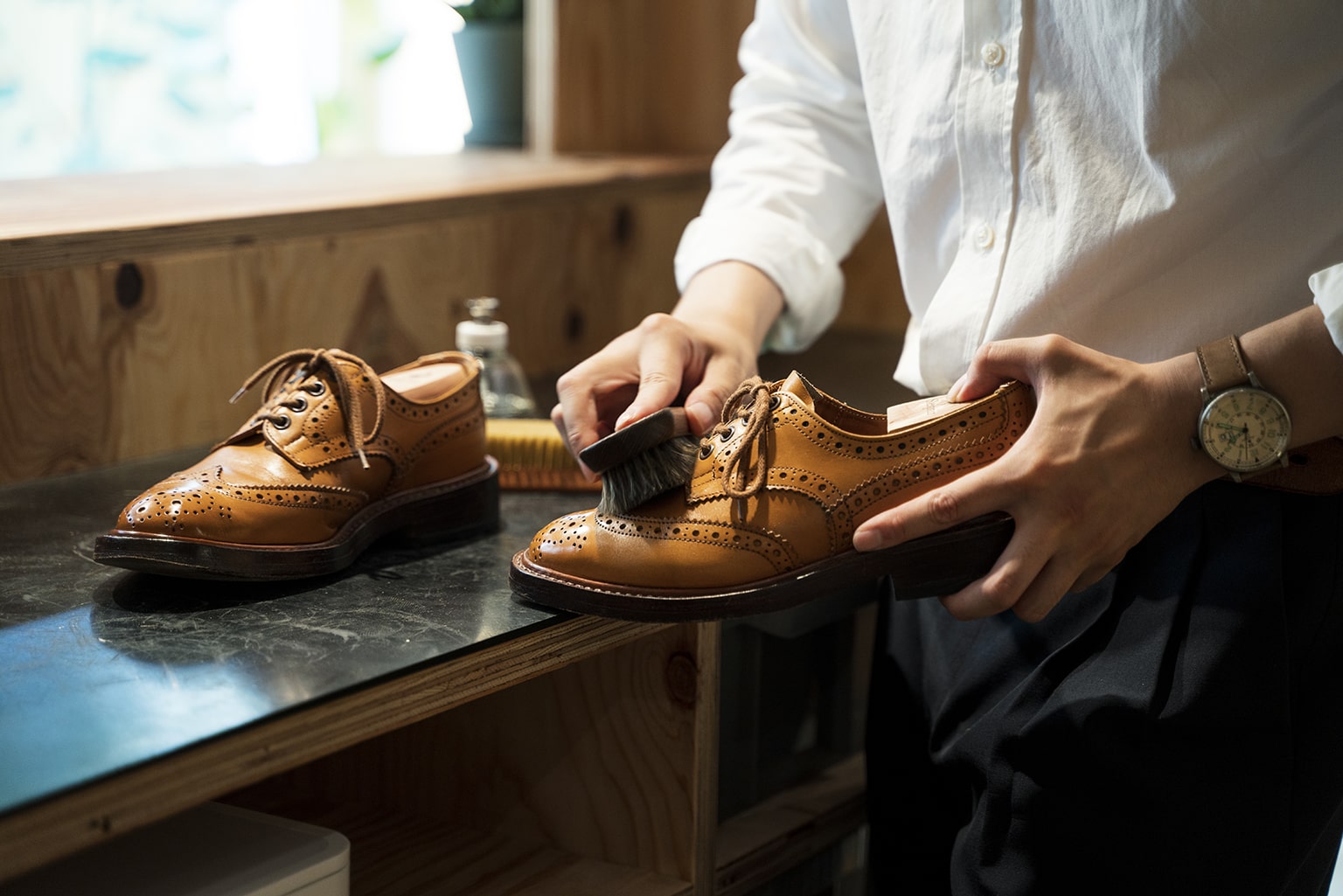
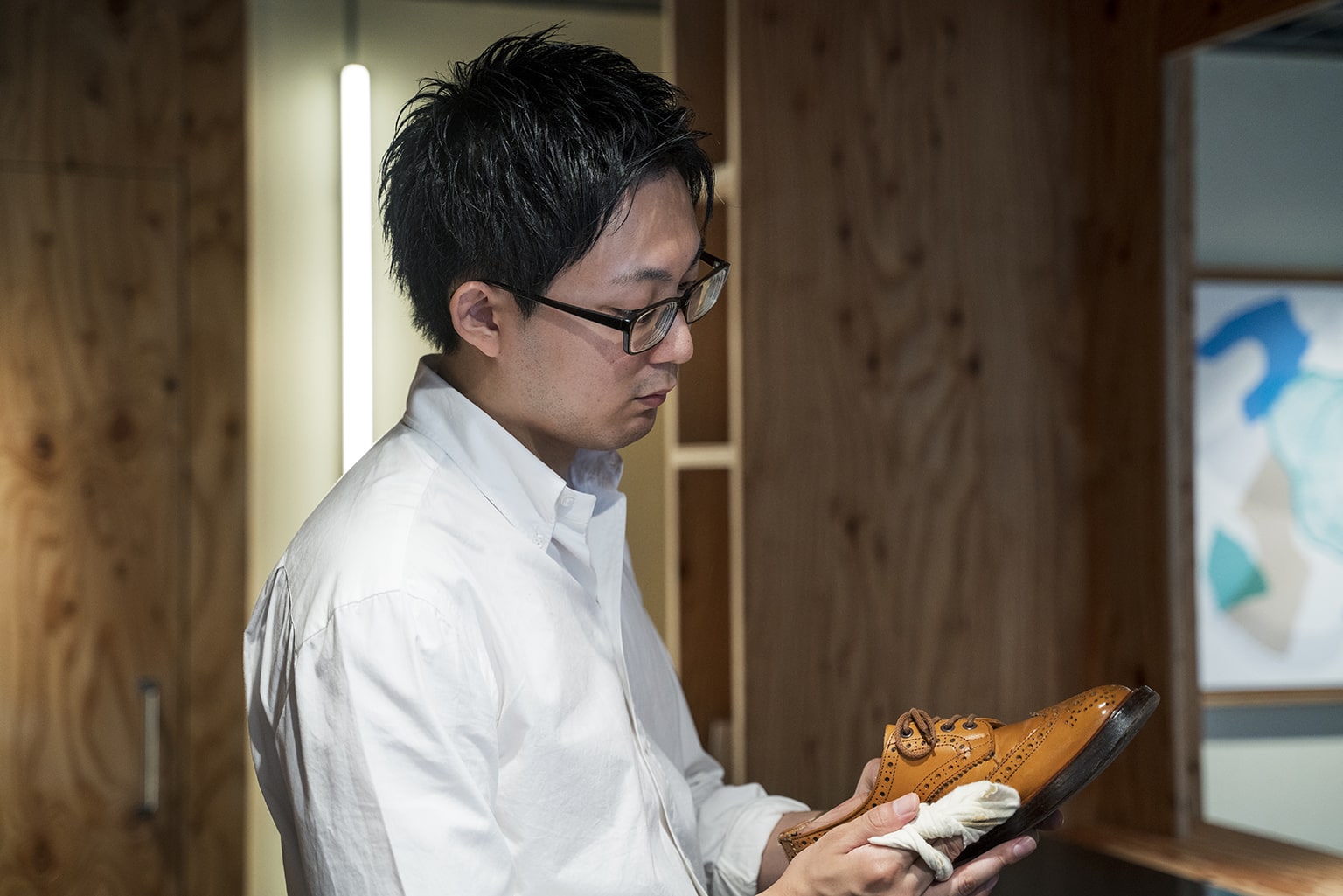
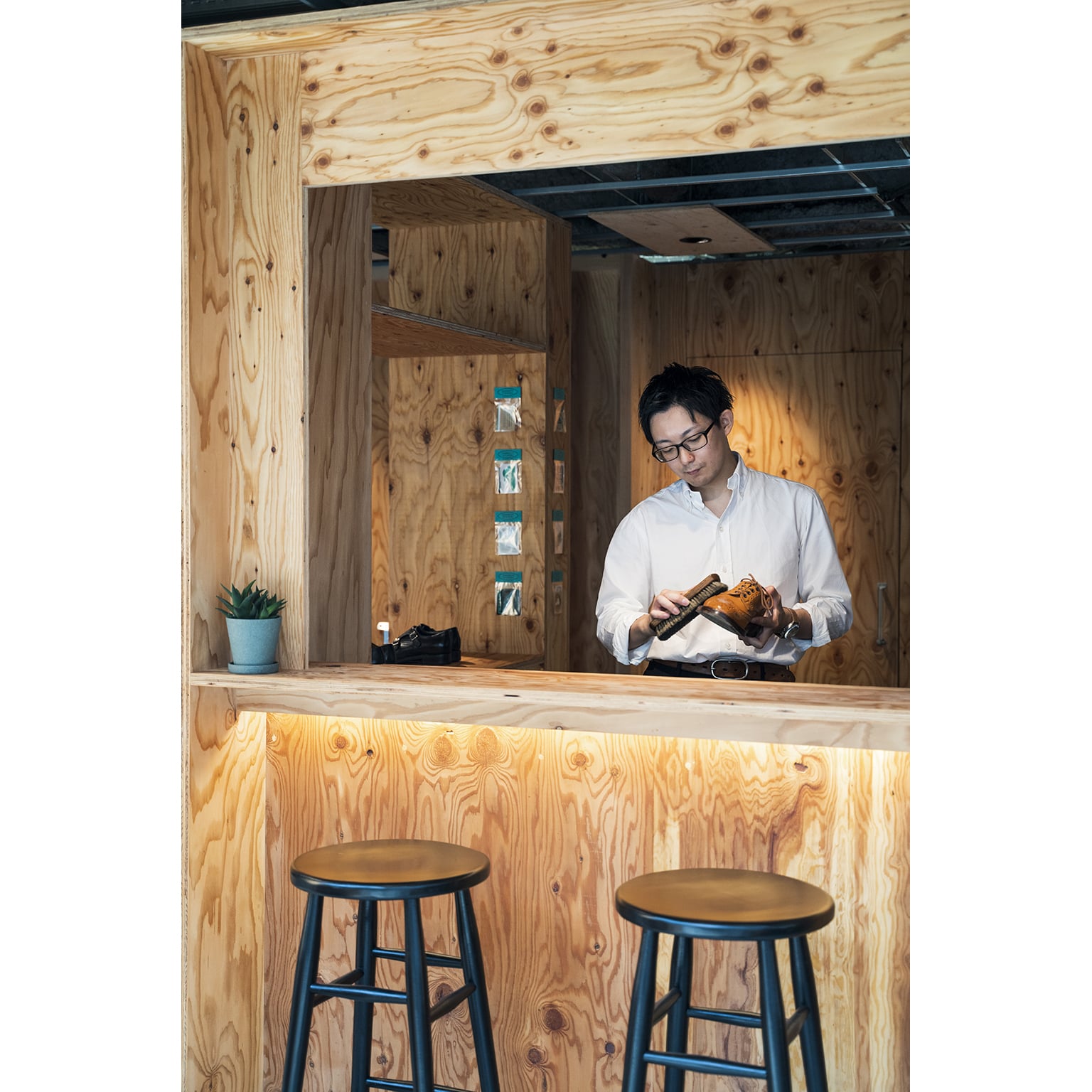
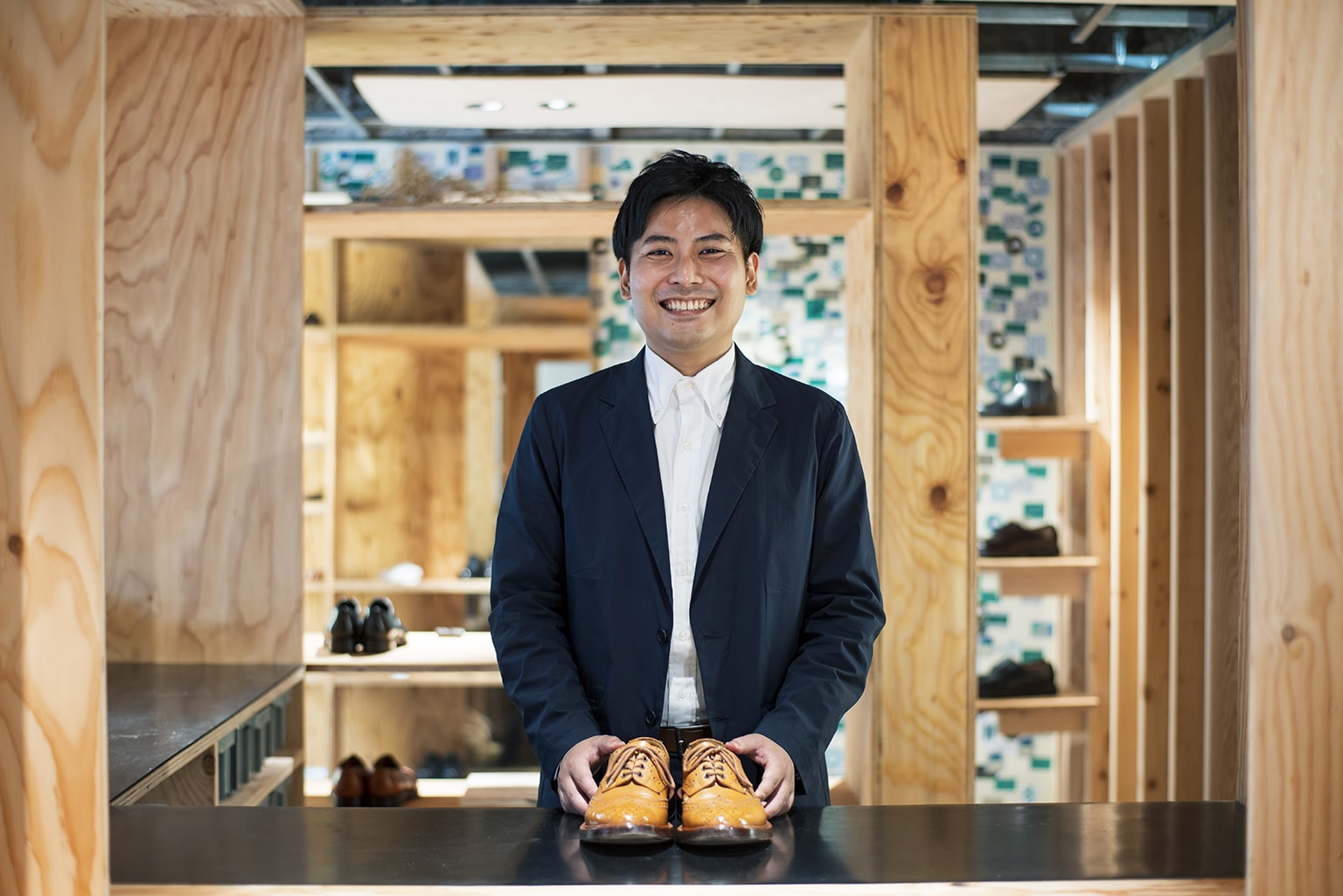
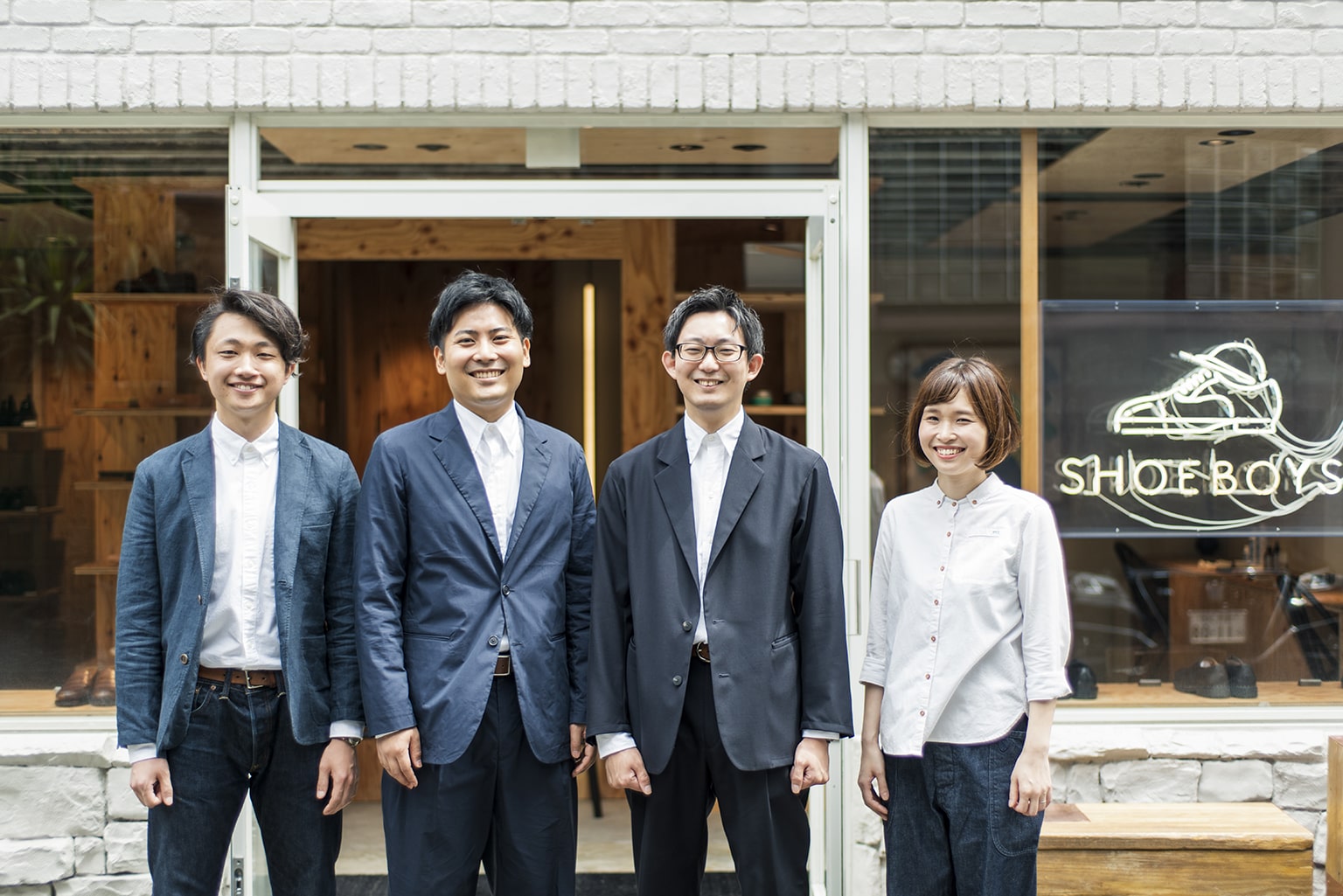
“SHOEBOYS” is a shoeshine and leather shoe shop run by So Okuno, known as the YouTuber “Okkun,” whose shoe-shining videos are popular among the young generation. This shop is, so to say, an attempt to emerge from the virtual world of the Internet to a real, physical world. It was designed in the midst of the new coronavirus pandemic when shopping at brick-and-mortar stores was difficult. Although online shopping is becoming more and more sophisticated, Suzuki believes people definitely still enjoy visiting physical stores.
Located in a quaint residential area away from the busy shopping district in Ikebukuro, the shop attracts fans of Mr. Okuno and people who know about SHOEBOYS. Suzuki wanted people to feel the energy of the physical space and have a high-resolution experience—something that cannot be possible in the virtual world.
The concept is “re-creation of the energy on the streets.” A hut is placed in the center, providing omnidirectional views of the shoe-shiner for customers. The surrounding area is a circular walkway resembling a “street.” The interior of the shop space, originally intended as office space for lease, was finished with cheap wallpaper and flooring—typical for spaces that require restoration to the original condition. For the sake of restoration, the wallpaper and flooring with fake patterns were simply removed. The walls were then finished with unique stickers designed by the illustrator Shiora Naito (the number of stickers increases as the customers add them). This idea was inspired by the street walls in the downtown area gradually covered with stickers of various artists, demonstrating respect to the street culture that is the origin of shoe-shiners.
The fake-wood floor and baseboards were also removed since the copy-and-pasted fake wood look was discarded in favor of the glue residues. The residues represent the work done by craftsmen, and Suzuki believes they represent the genuine physical world.
The low ceiling could be almost touched, causing a cooped-up feeling. Therefore, the plasterboards were removed to expose the furring strips. Conifer plywood boards embedded with downlights with a high color rendering property are placed as if floating in the air. Drain pipes of the upper-level residence are visible in between. This is also evidence of a real space.
In Japan, there are wood or steel construction buildings covered with superficial brick tiles to make them look like brick houses. These exterior walls, which tend to be frivolous and ostentatious, were painted white. Benches and tables made of polished copper and solid wood are placed to accentuate their solid feel and genuineness in contrast to the walls. The copper changes its appearance as it ages, and customers can enjoy a cup of tea there while admiring the shoes and enjoying conversation with each other.
The peeling and painting process and its traces felt like we were bringing back a genuine time and energy of a lively space. The time spent on finding the traces of craftsmen from the past, enjoying the changes over time, and gazing at an object becomes something to love and opens up our view. It has something in common with the act of polishing and cherishing leather shoes. Suzuki believes that customers can have a high-resolution experience that can only be possible in physical spaces.
『SHOEBOYS』は靴磨きの動画が若者に人気のユーチューバー''おっくん''こと奥野奏さんによる、靴磨きと革靴のお店です。いわばインターネットのバーチャルな世界から、リアルな実店舗への挑戦であります。この店は新型コロナウイルスの影響で人々が実店舗での買物が難しい時期にデザインしました。オンラインショッピングも充実する世の中ですが、人々はリアルな空間の楽しみを忘れていないと思います。
池袋の繁華街から外れた閑静な住宅街。奥野さんのファンや『SHOEBOYS』を知る人がわざわざ訪れるお店です。私はここでバーチャルな世界では感じ得ない、リアルな空間の精気や解像度の高い体験のようなものを味わってほしいと考えました。
テーマは路上の精気の再現です。中央にはお客様が靴磨き職人の姿を全方位から覗ける小屋を建てました。周囲は「ストリート」に見立てた回遊できる通路です。元は賃貸事務所用の部屋で、原状回復が課される物件特有の安い壁紙や床材の内装でした。そのフェイクなプリントが施された壁紙や床材は剥がすだけとしました。その壁にイラストレーターでもあるShiora Naitoによるオリジナルステッカーを貼り、仕上げています(来店者も貼りつける仕掛けの為、現在進行形で増えていきます)。これは繁華街の路上の壁が徐々に様々なアーティストによるシールステッカーで覆い尽くされていく様からヒントを得ました。靴磨き職人のルーツであるストリートの文化への尊敬の念が込められているのです。
フローリング調の床と巾木も剥がしました。コピー&ペーストでプリントされたフェイクな「木目調」を否定して、「接着剤の跡」を愛する。その方が職人の手跡を感じられ、リアルならではの本物と考えるからです。
天井は手が届くほど低く、圧迫感がありました。そこで石膏ボードを取り除き下地材を露出させました。演色性の高いダウンライトを埋め込んだ針葉樹合板を浮遊するように配置し、その隙間から階上住居の排水管が見え隠れする。それもリアルな空間ならではの証拠です。
日本では木造や鉄骨造なのに、表面的なレンガタイルで装い、煉瓦造り風に見せる建築が見受けられます。軽薄で虚飾になりがちな外壁は真っ白に塗り潰しました。代わりに重量感と本物感の対比として、磨き銅や無垢木材で出来たベンチとテーブルを置きました。経年変化のある銅板の上で靴を愛でながらお茶もでき、お客様同士での会話も楽しめるようなりました。
剥がしたり塗り潰した行為と痕跡は、嘘のない時間や生々しい空間の精気を取り戻すようでした。過去の職人の手跡を見つけ、経年変化を味わい、物を見つめる時間が愛すべきものとなり、視界が開ける。それは革靴を磨き育てる行為とも重なるものがあります。ここでリアルな空間でこそ感じられる解像度の高い体験を感じて頂けると考えます。
Project / SHOEBOYS
Open / July, 2020
Floor space / 39.87 sqm
Location / Ikebukur, Tokyo, Japan
Client / So Okuno
Architects / Yagyug Douguten
Design team / Fumitaka Suzuki, Marie Iwata
Brand Design / shiora naito design studio
Contractor / Komatsubara kenso
Photographs / Kiyoshi Nishioka